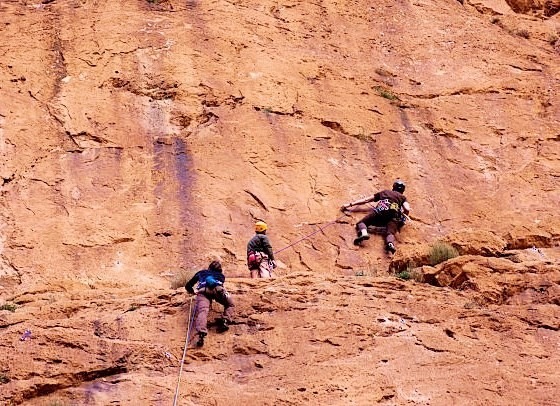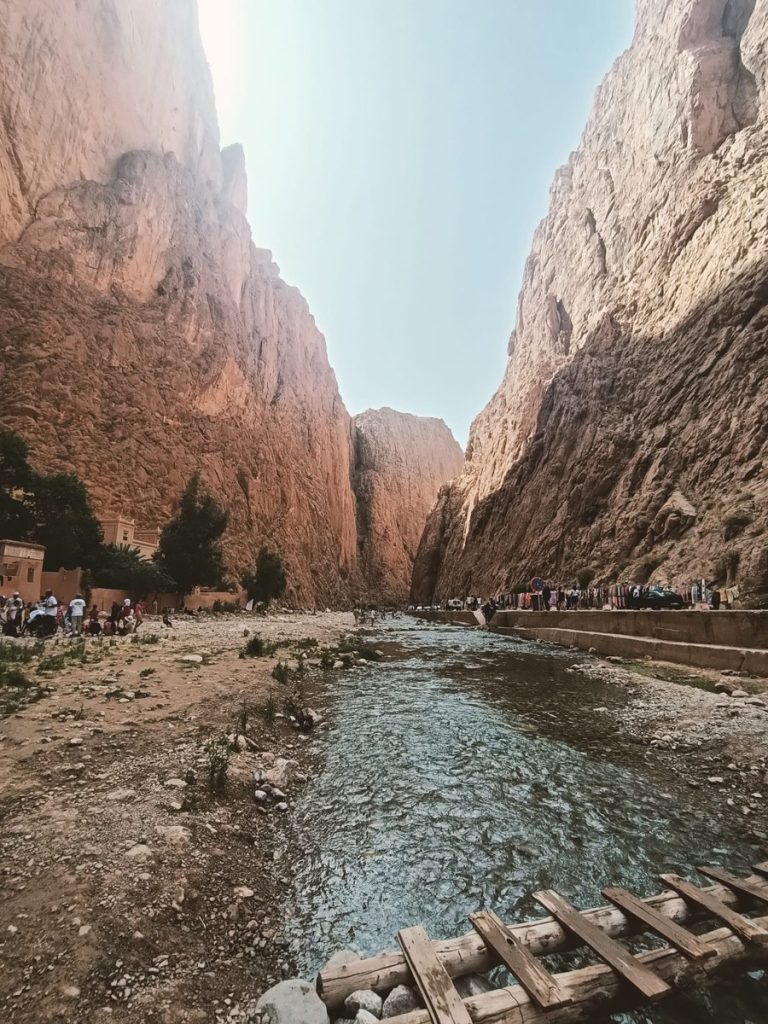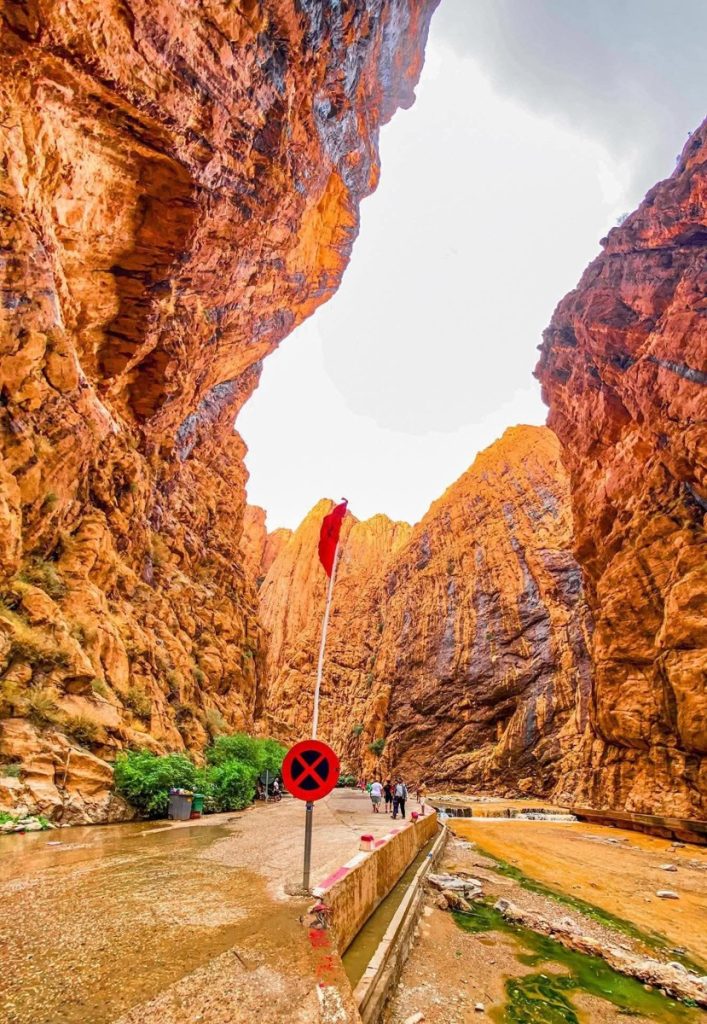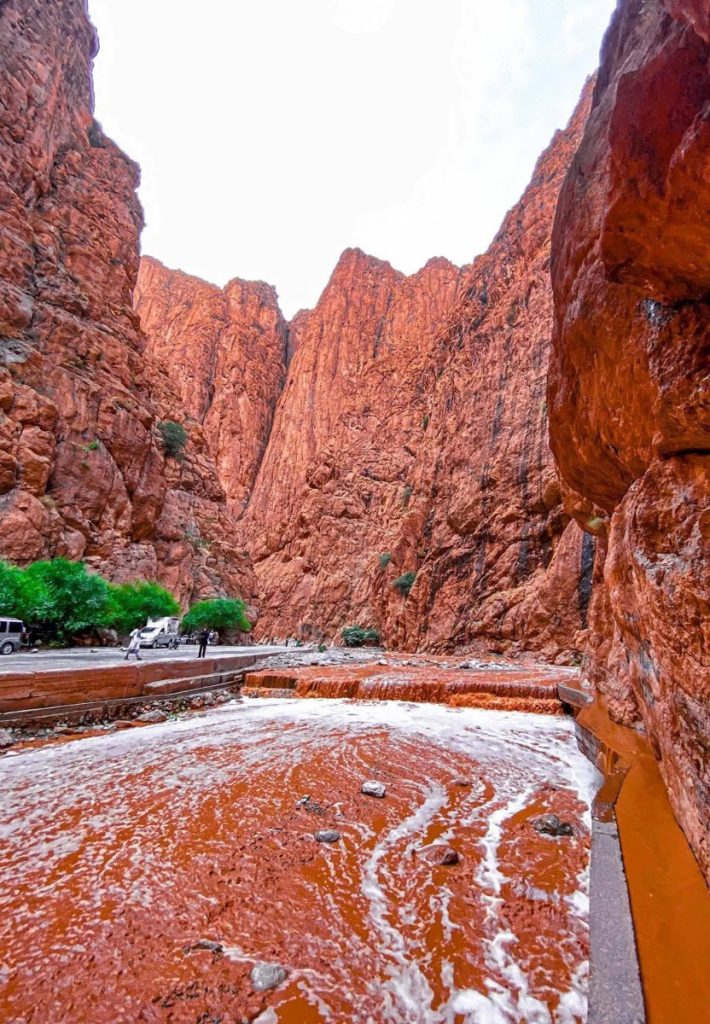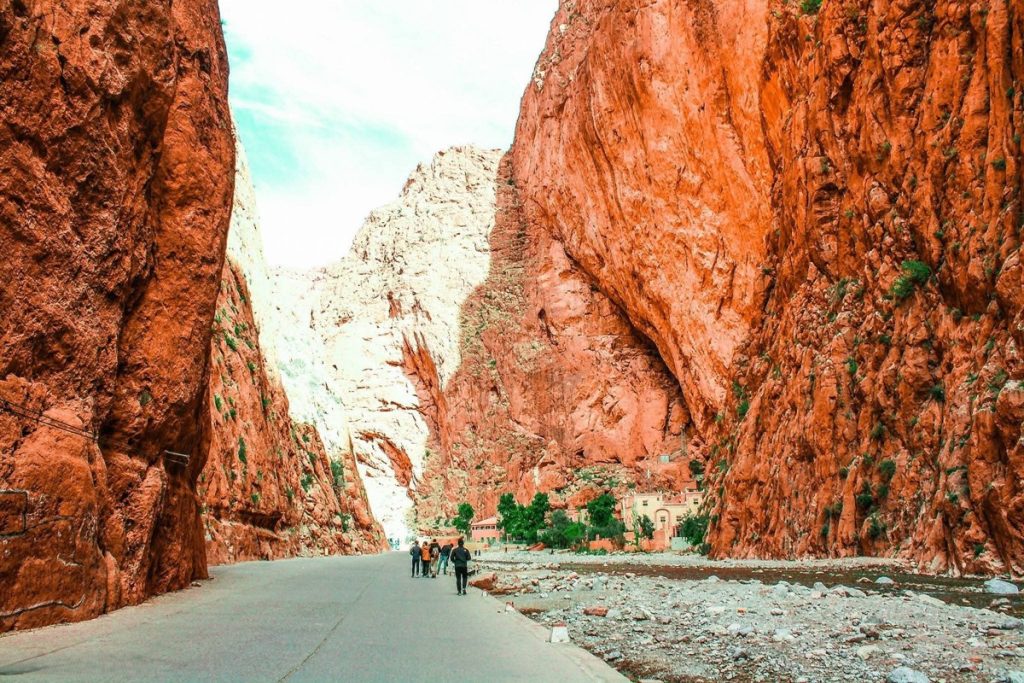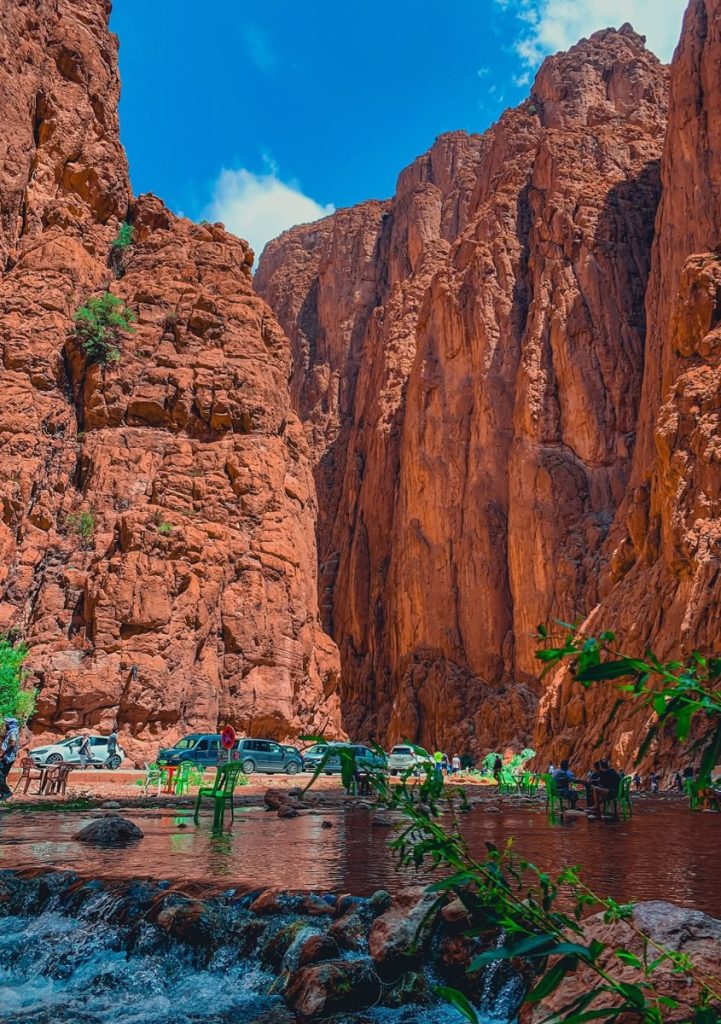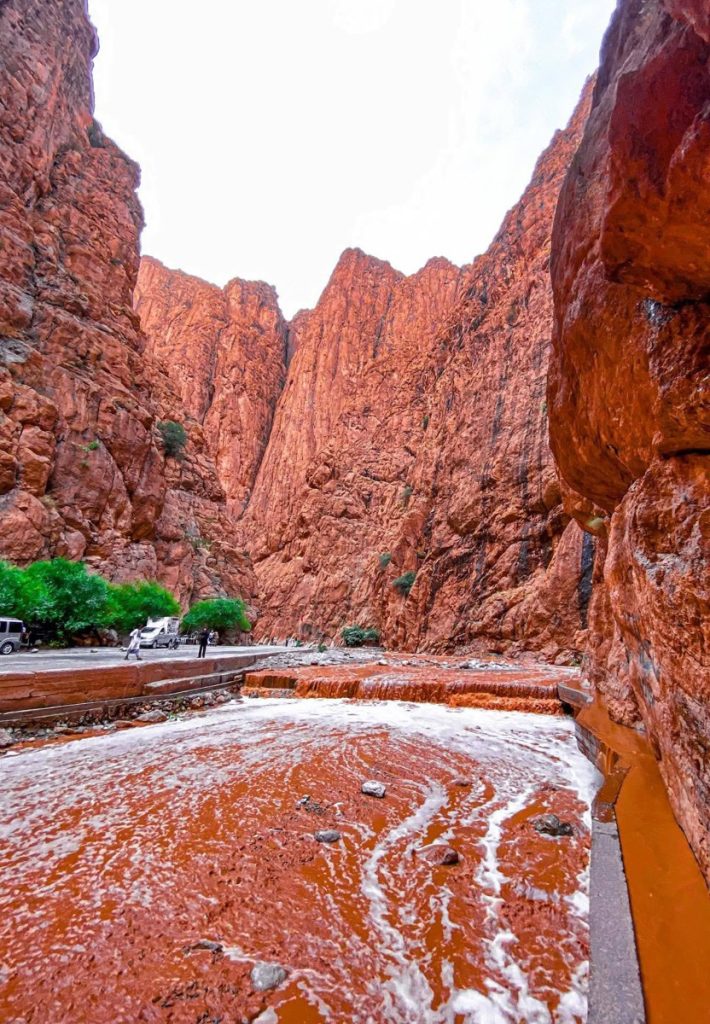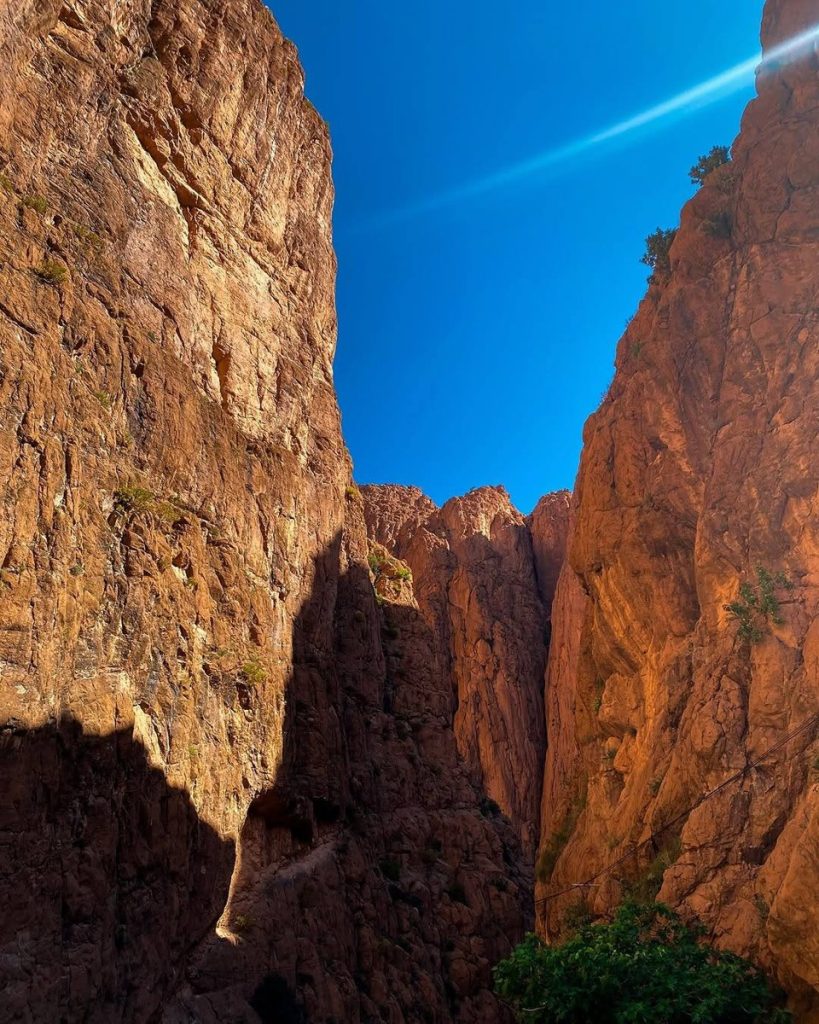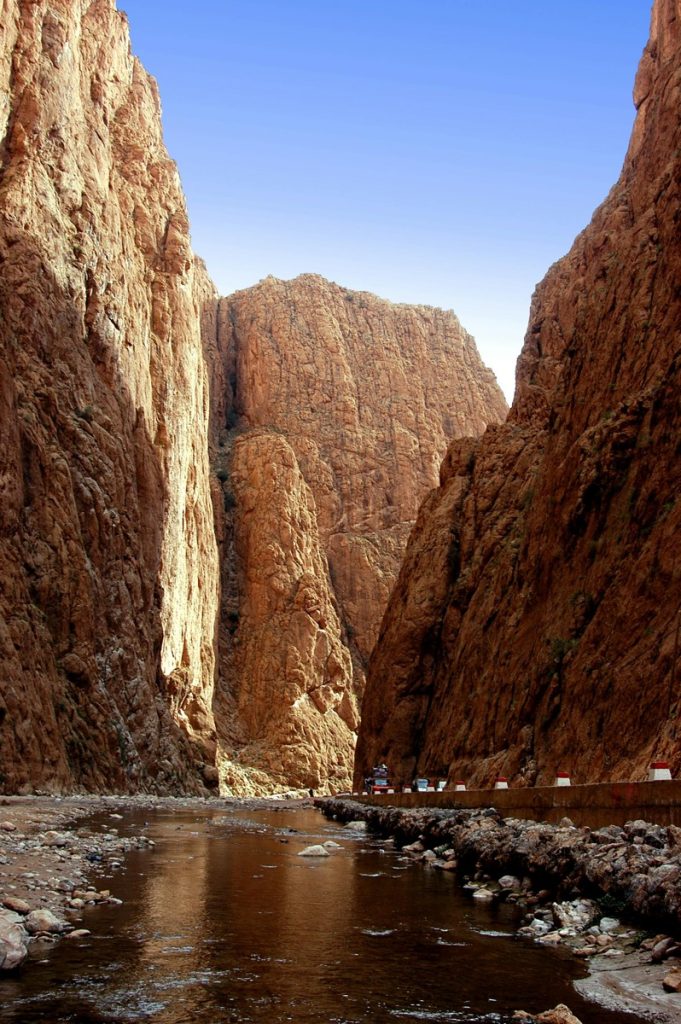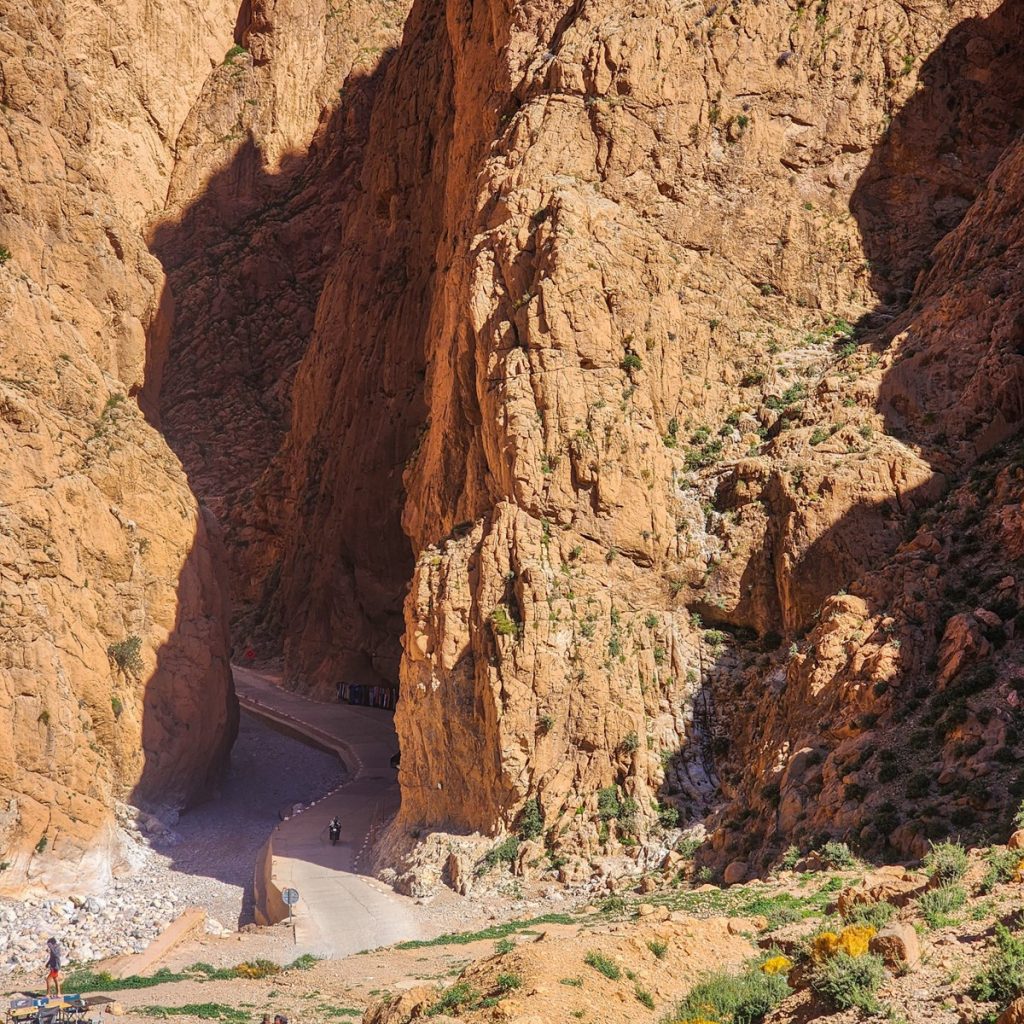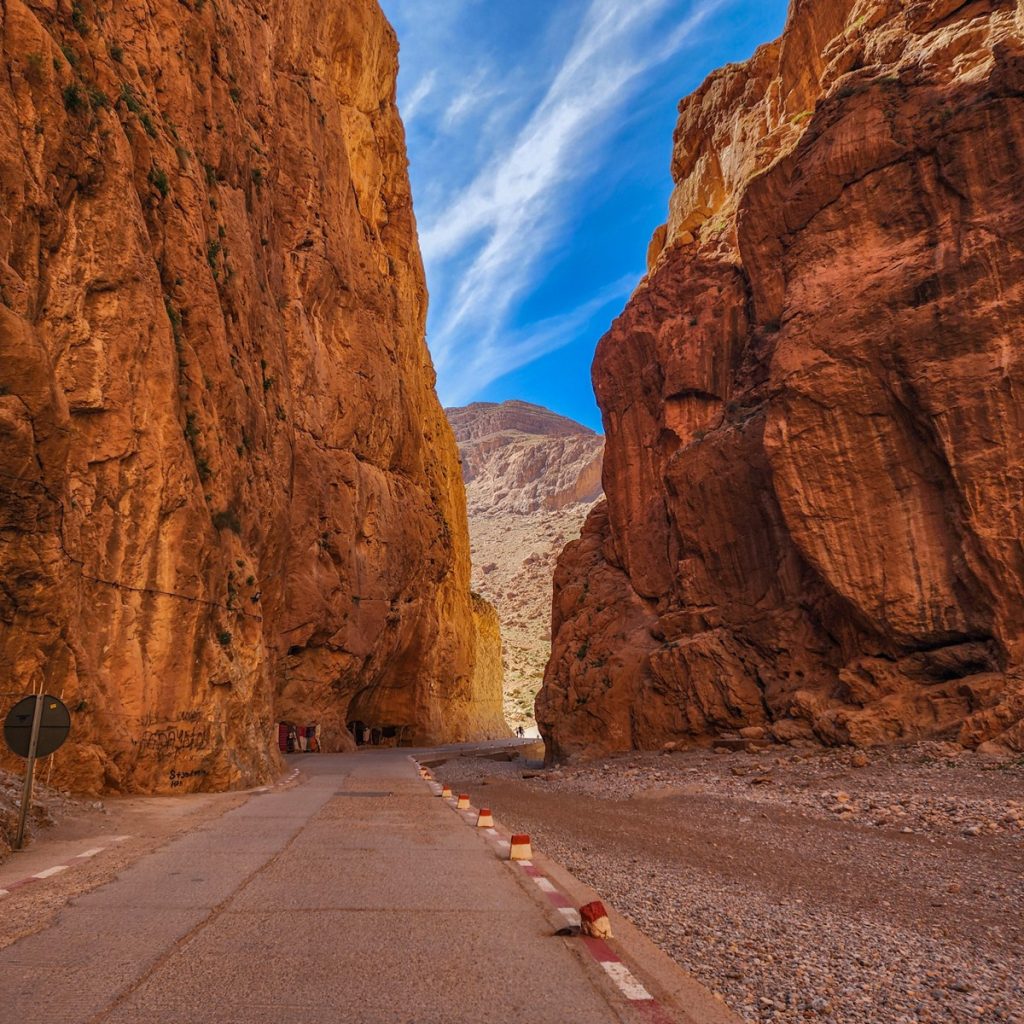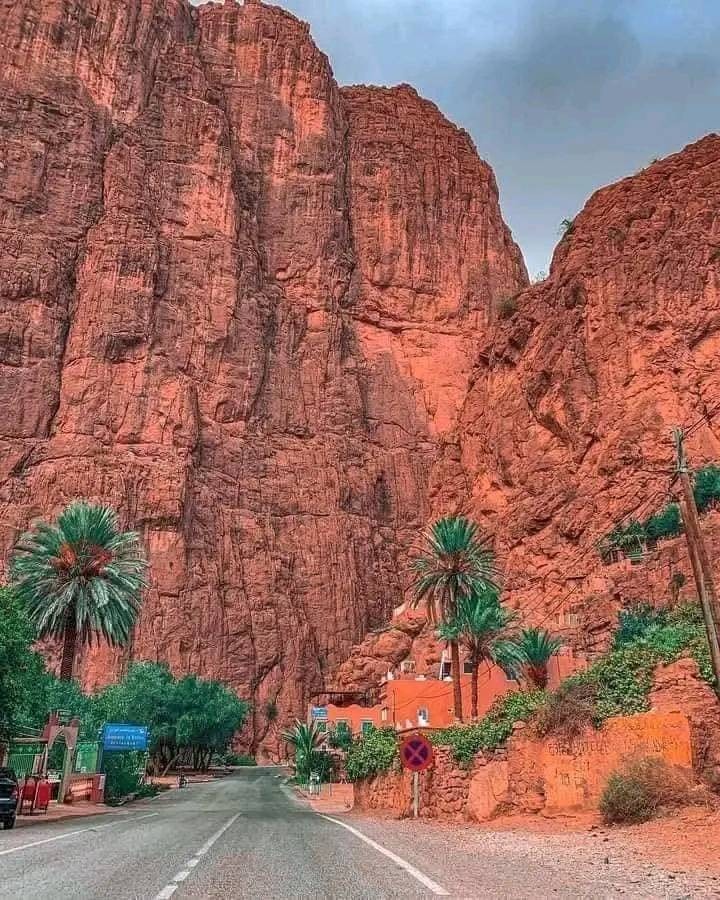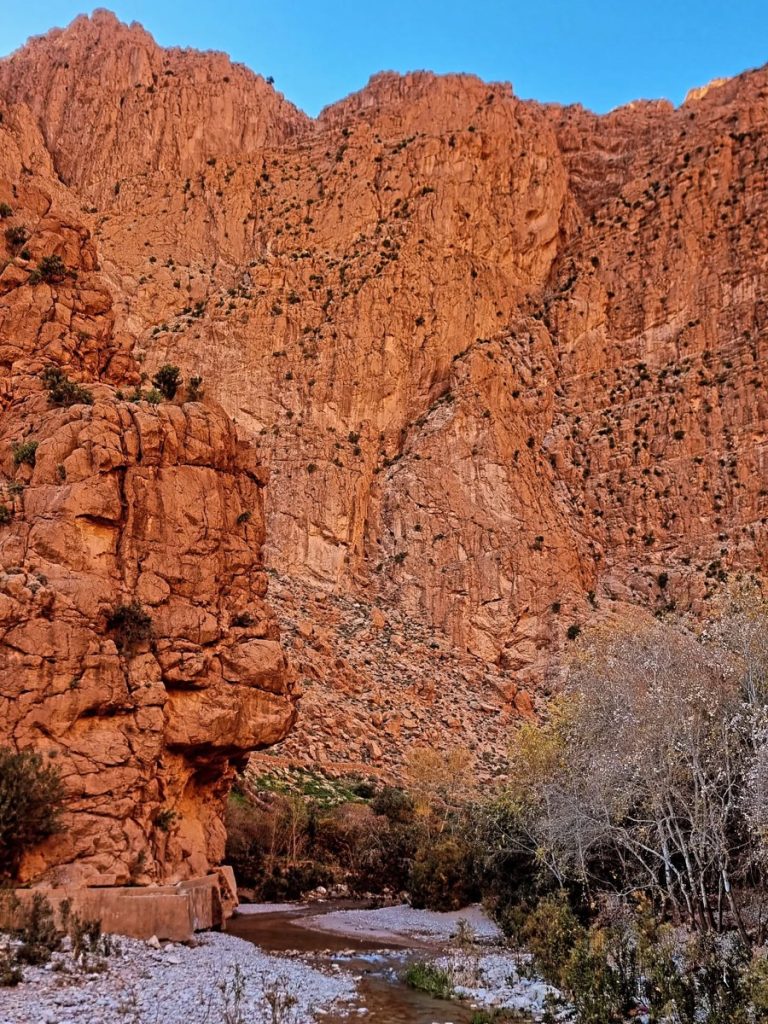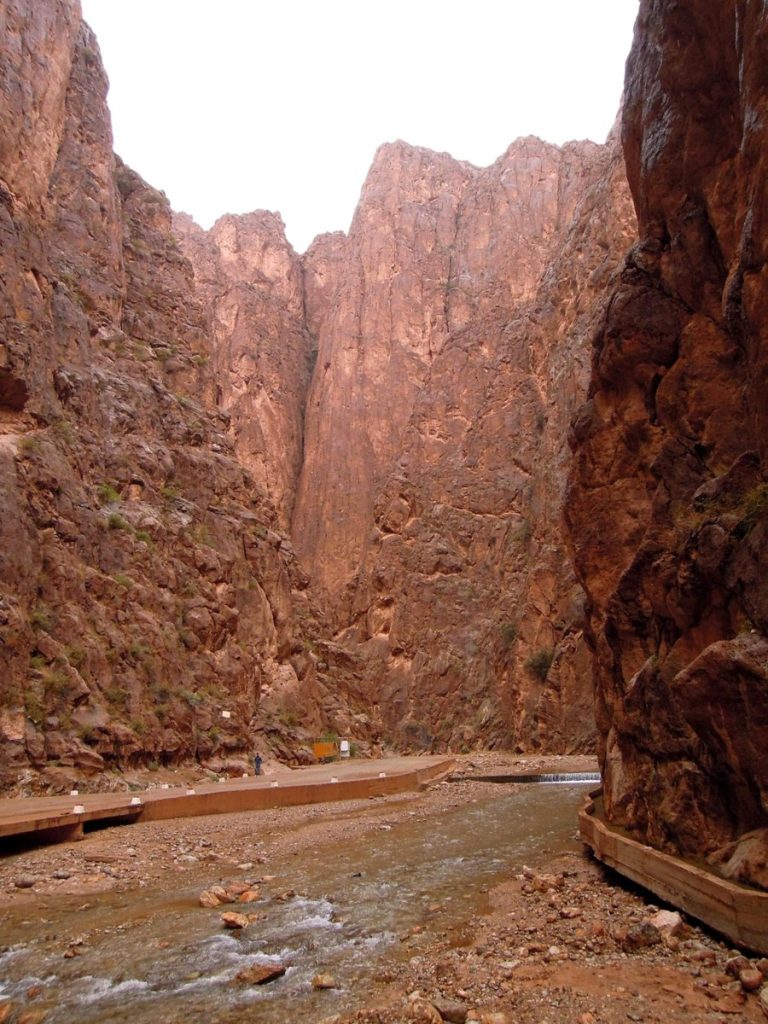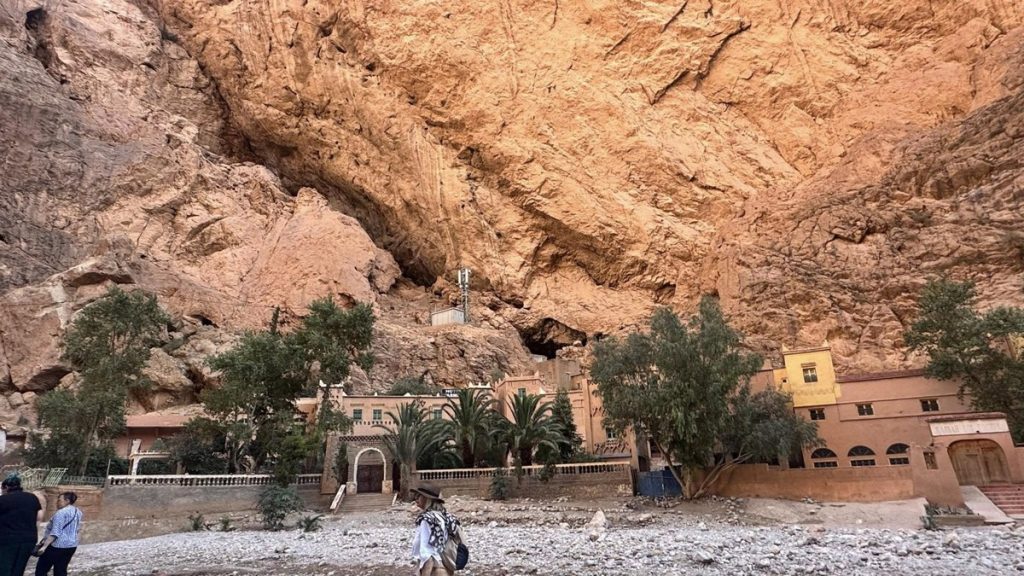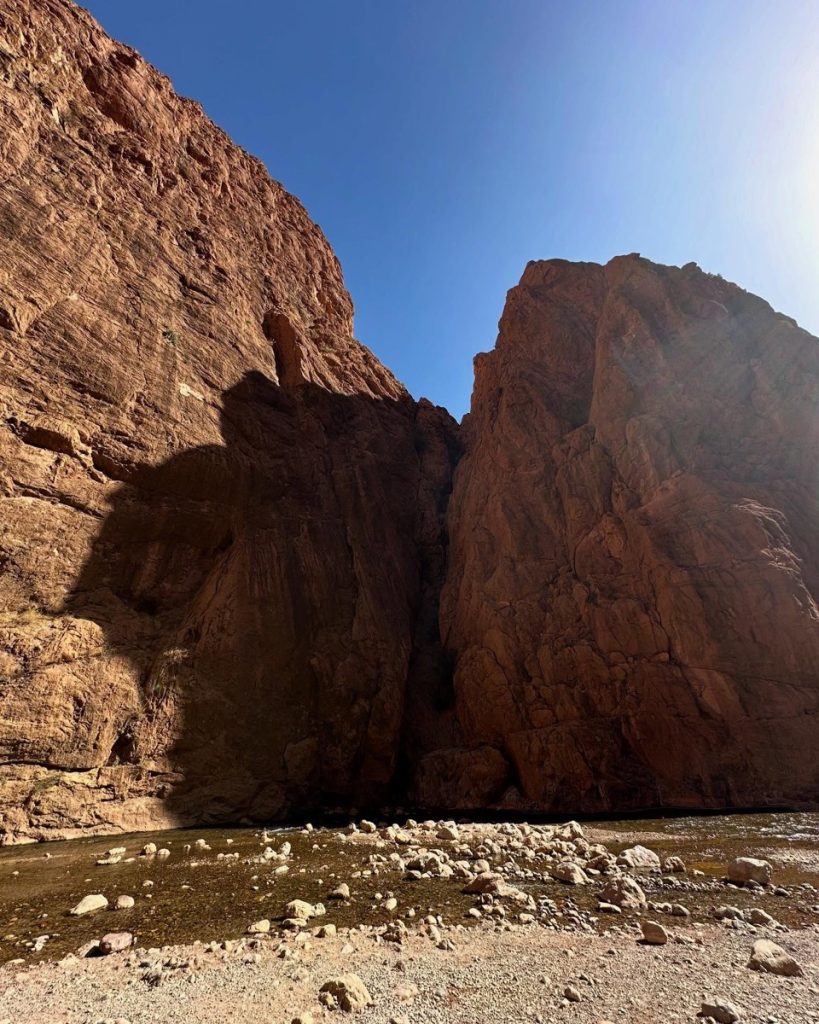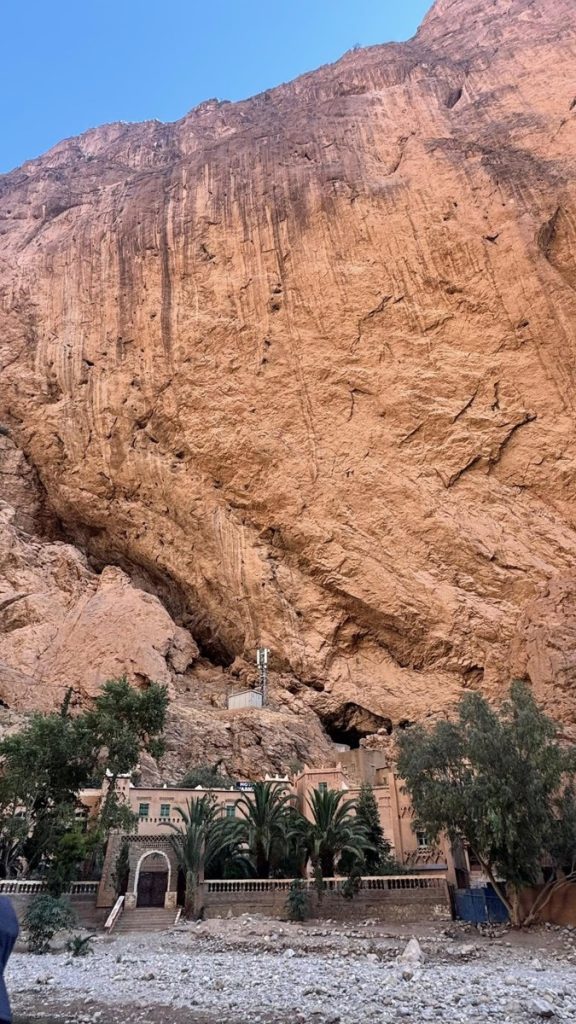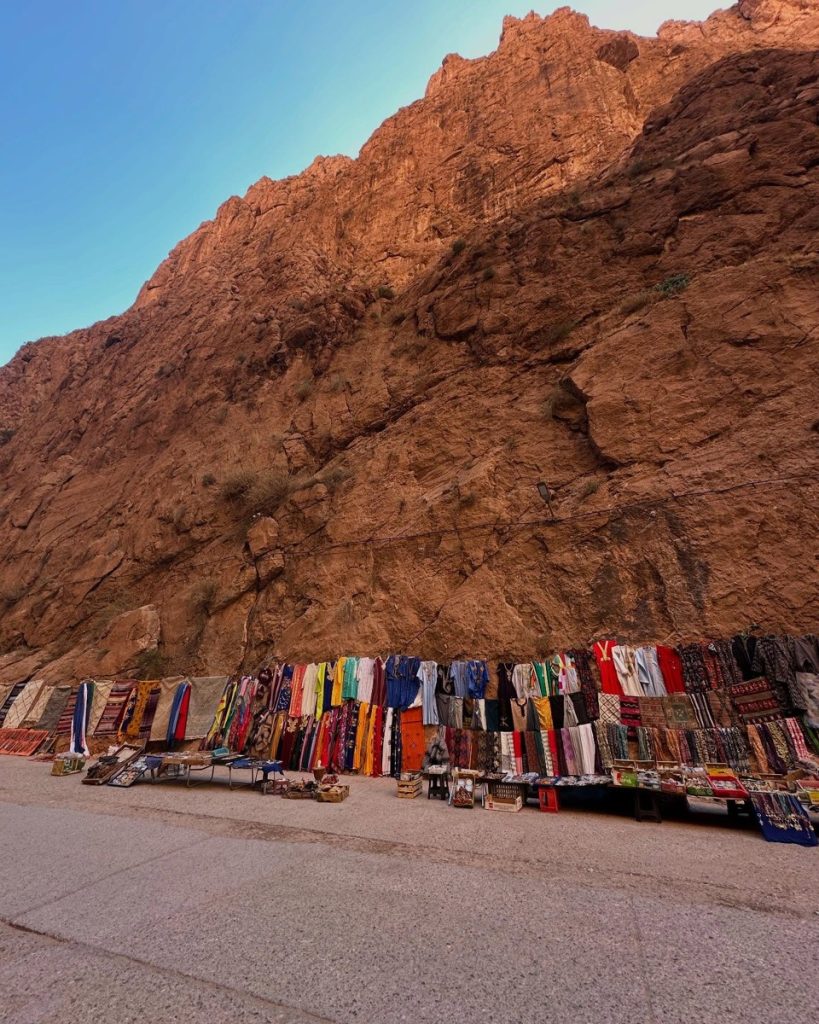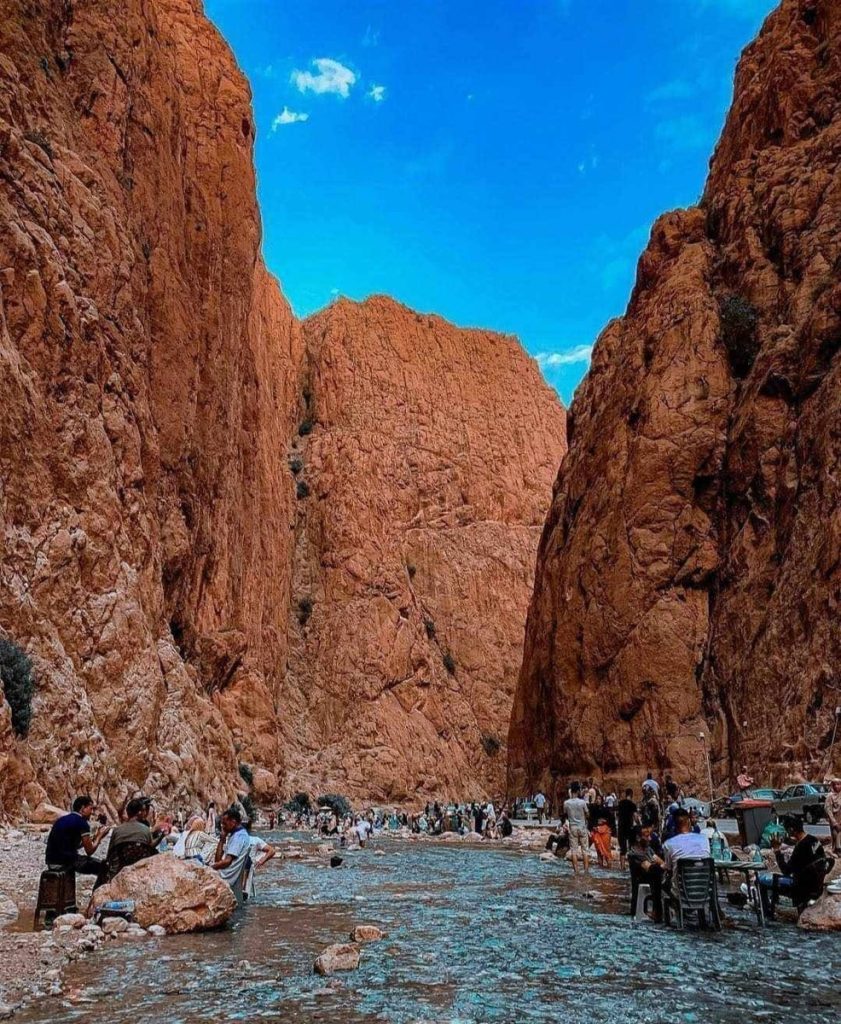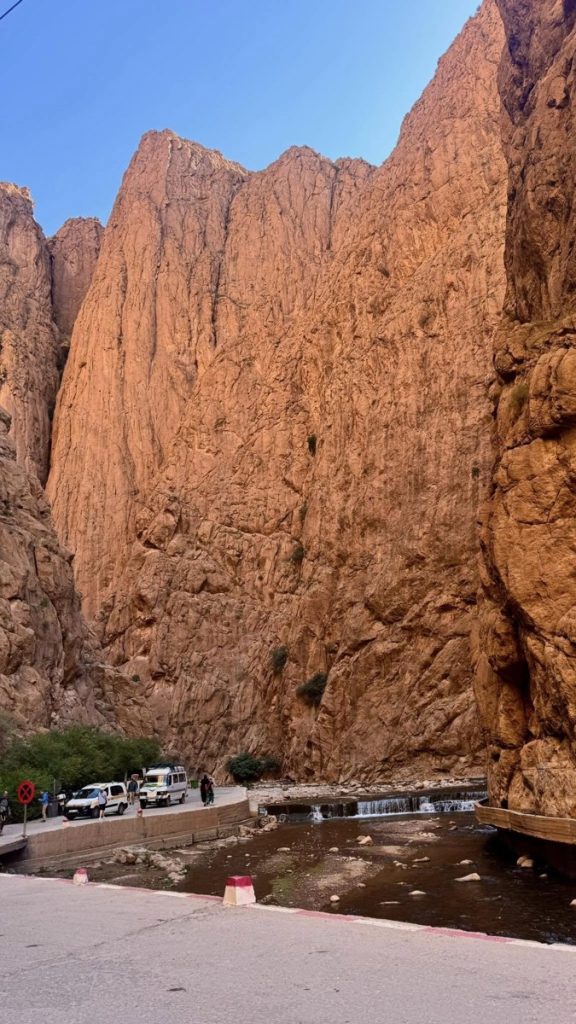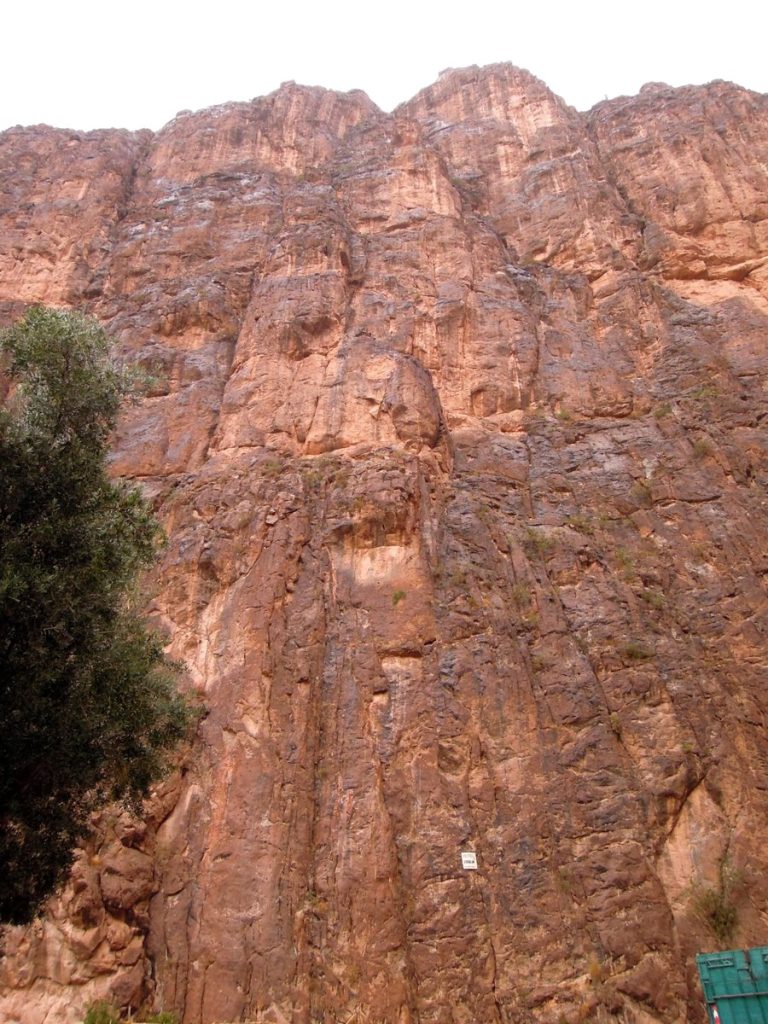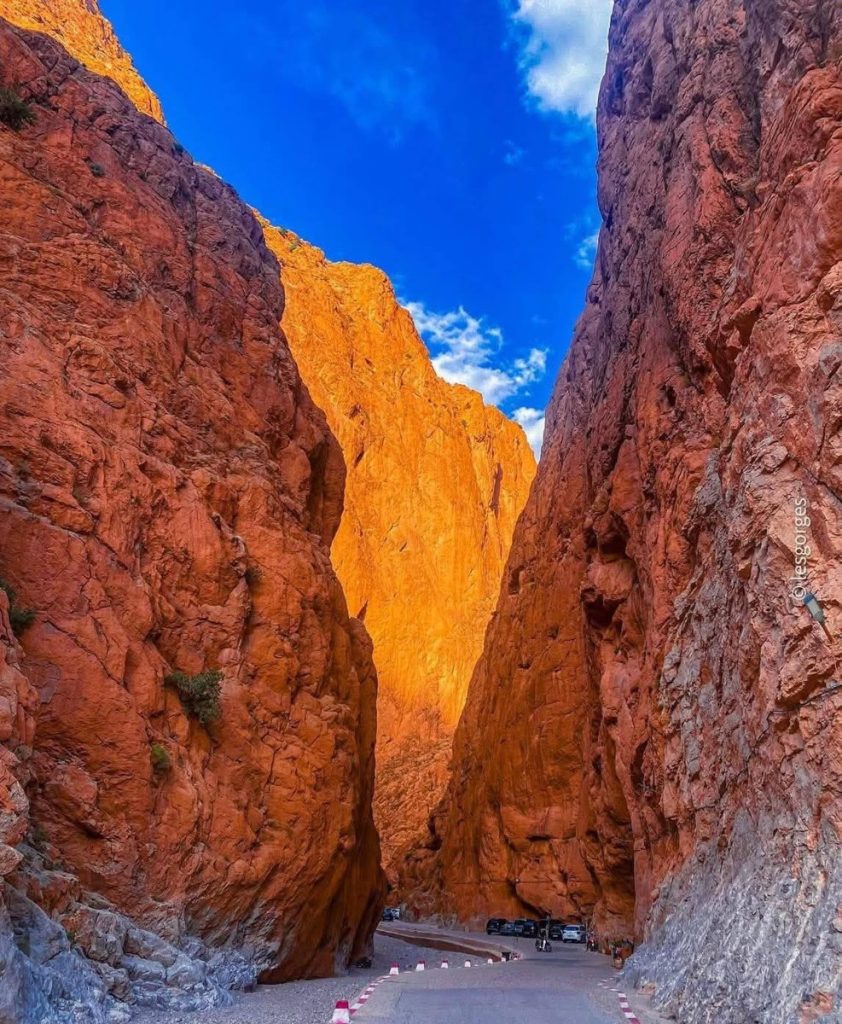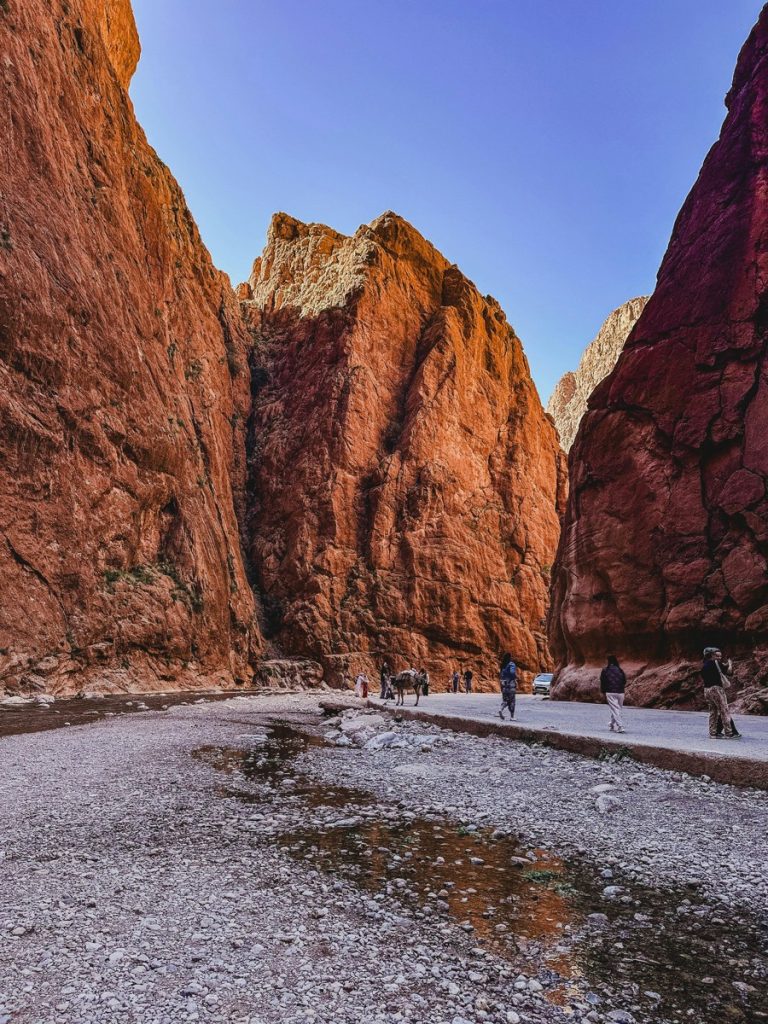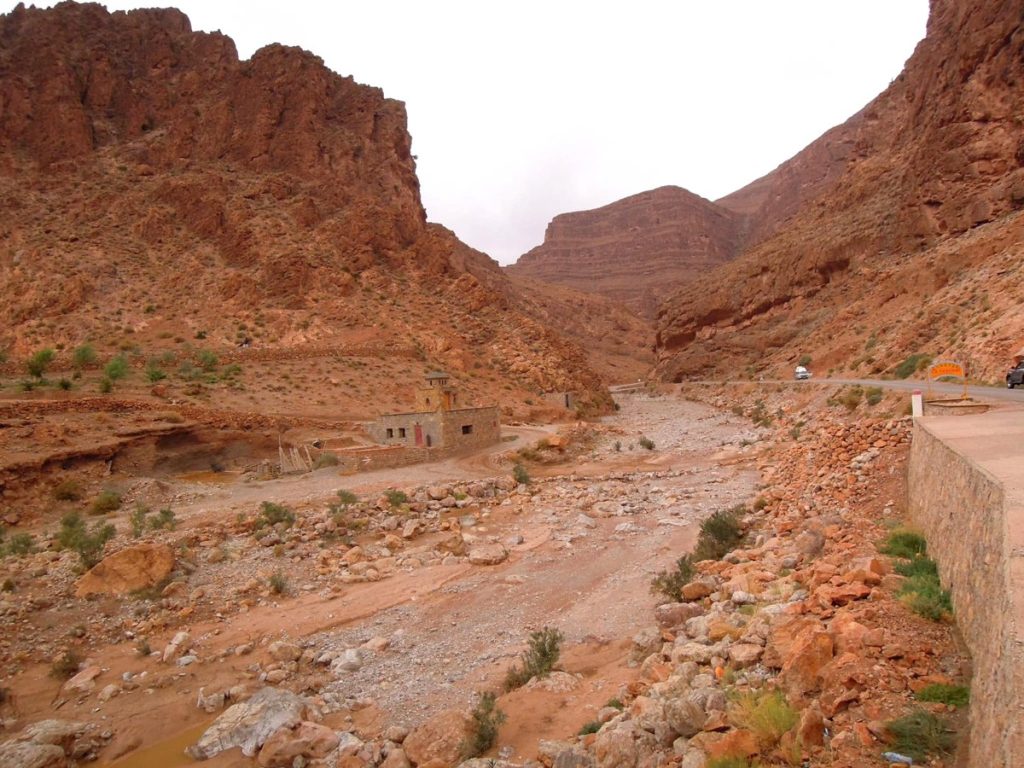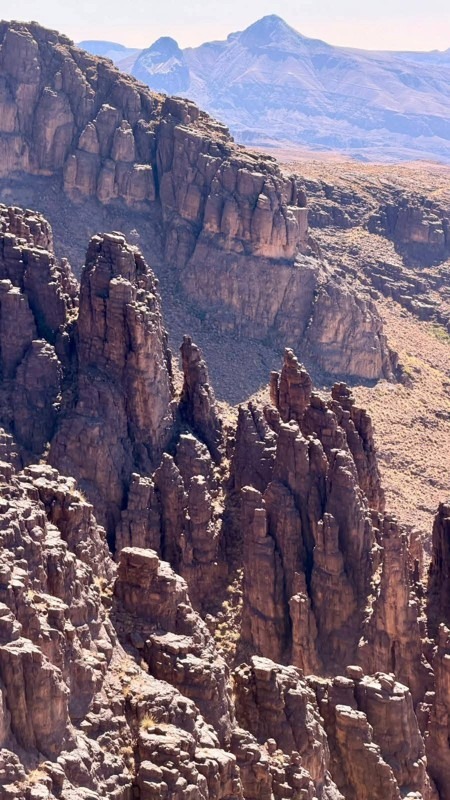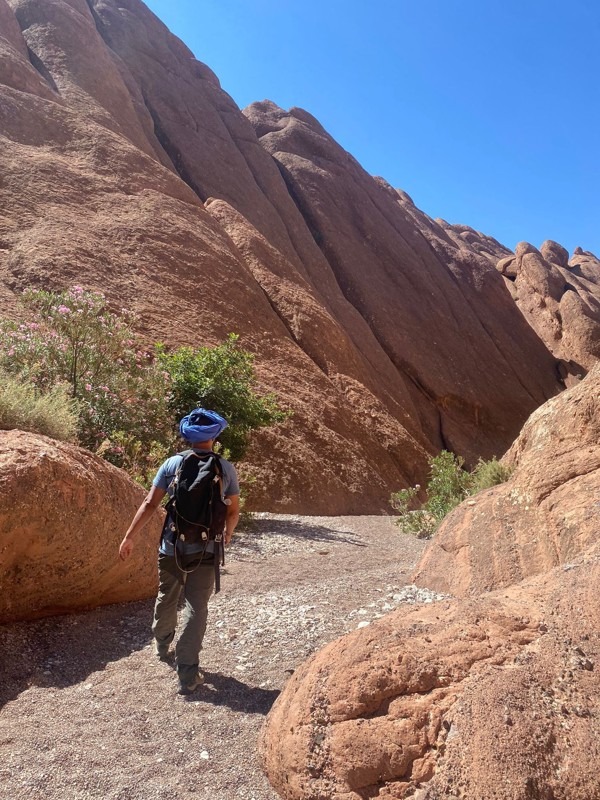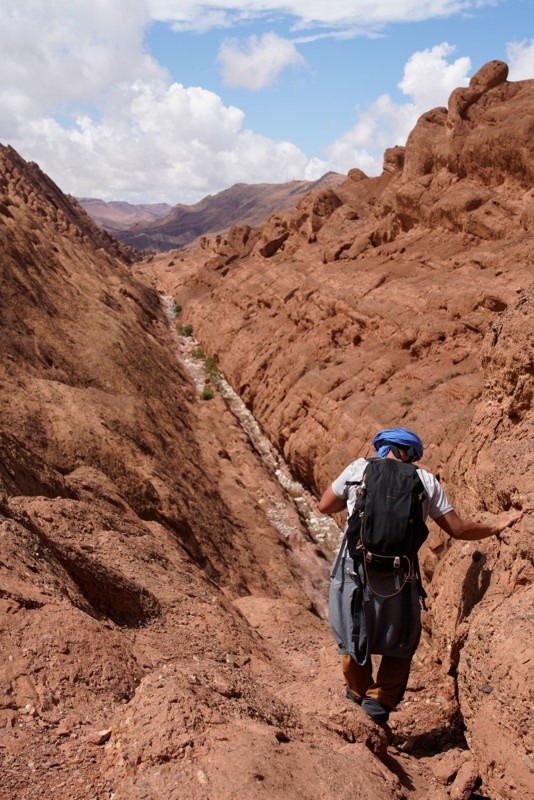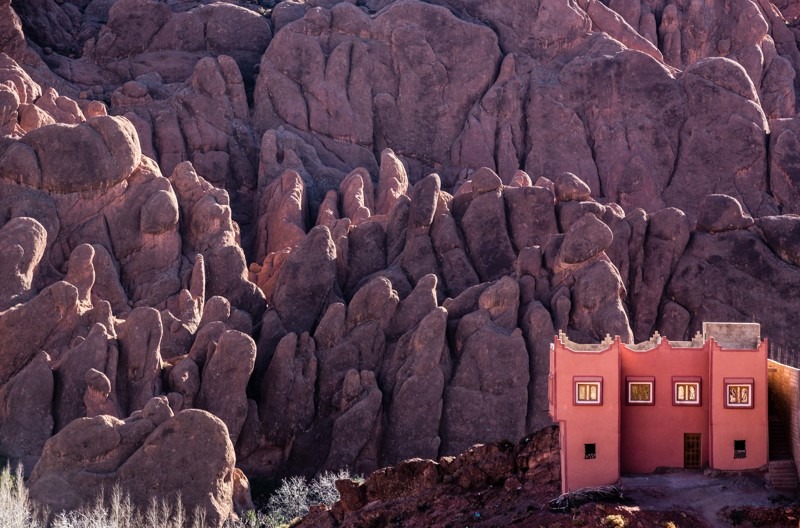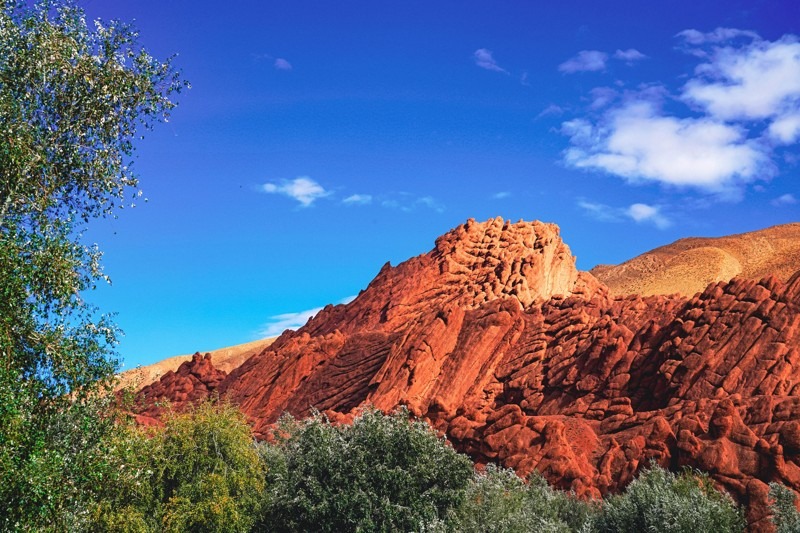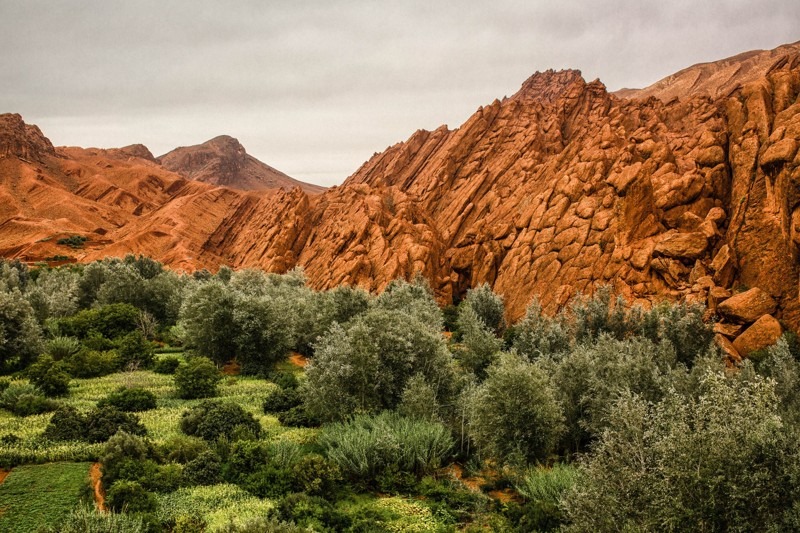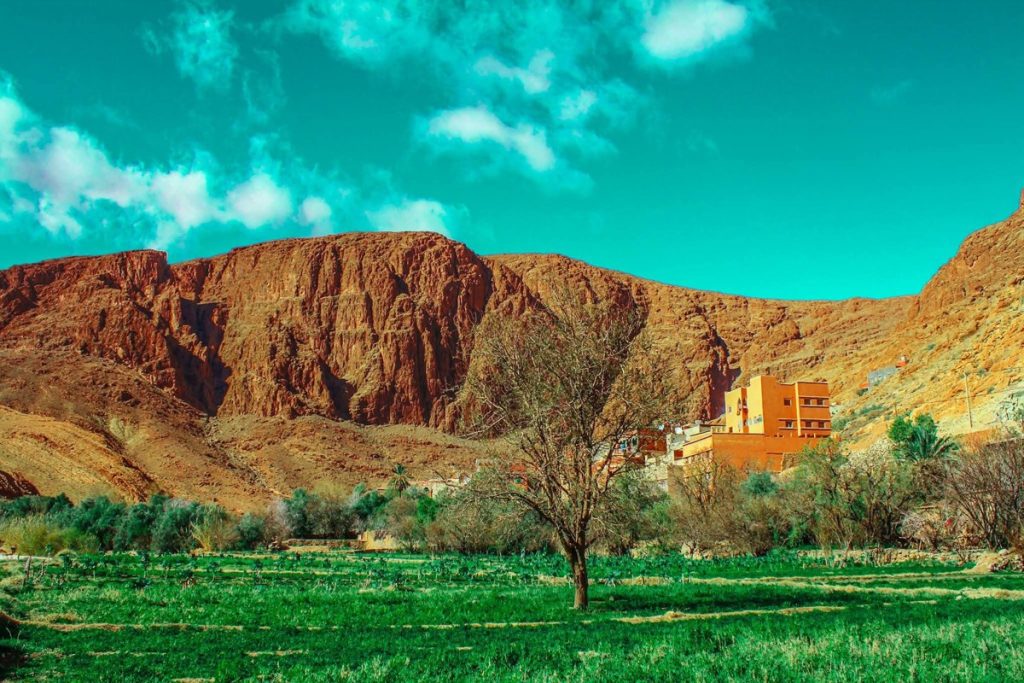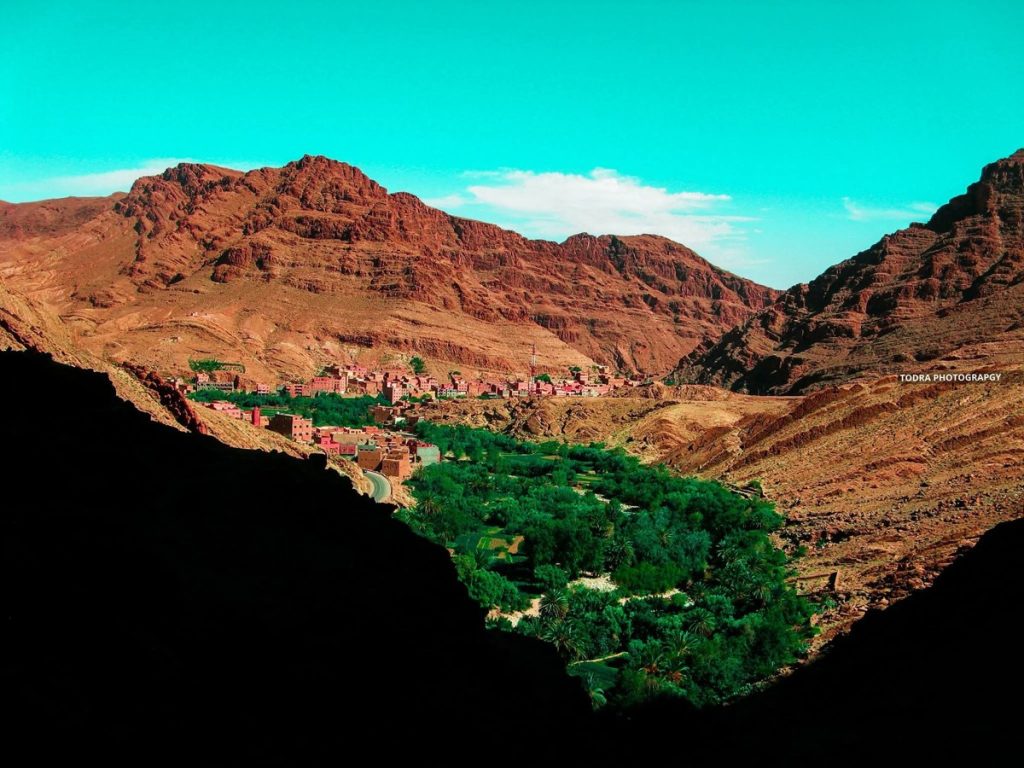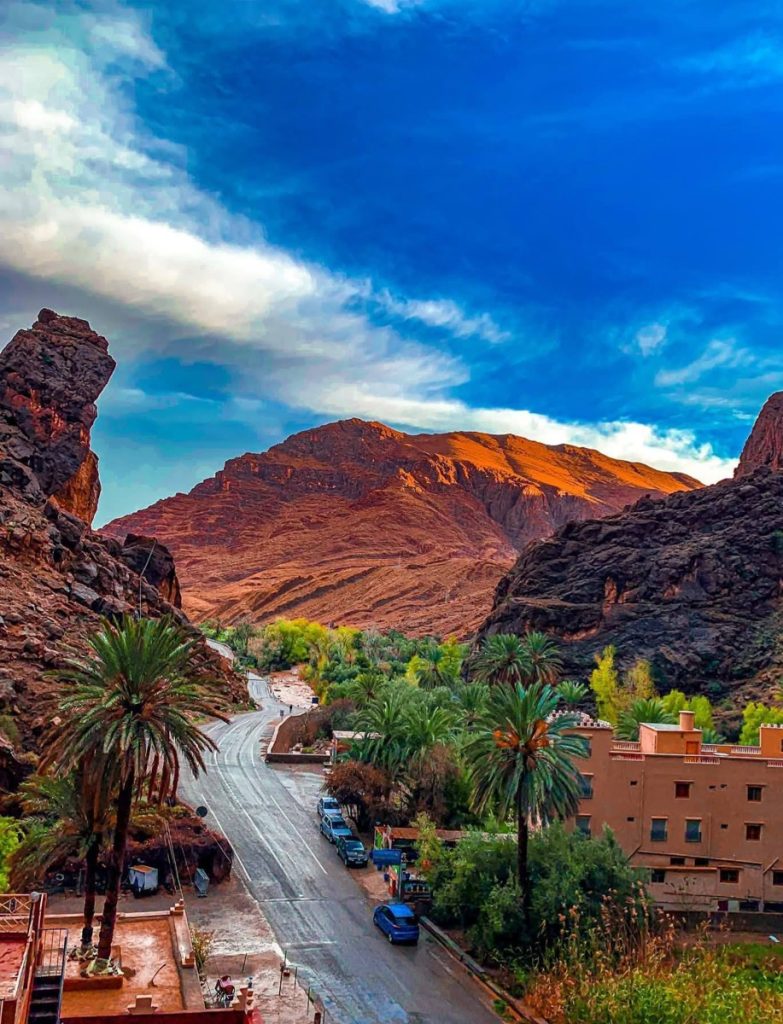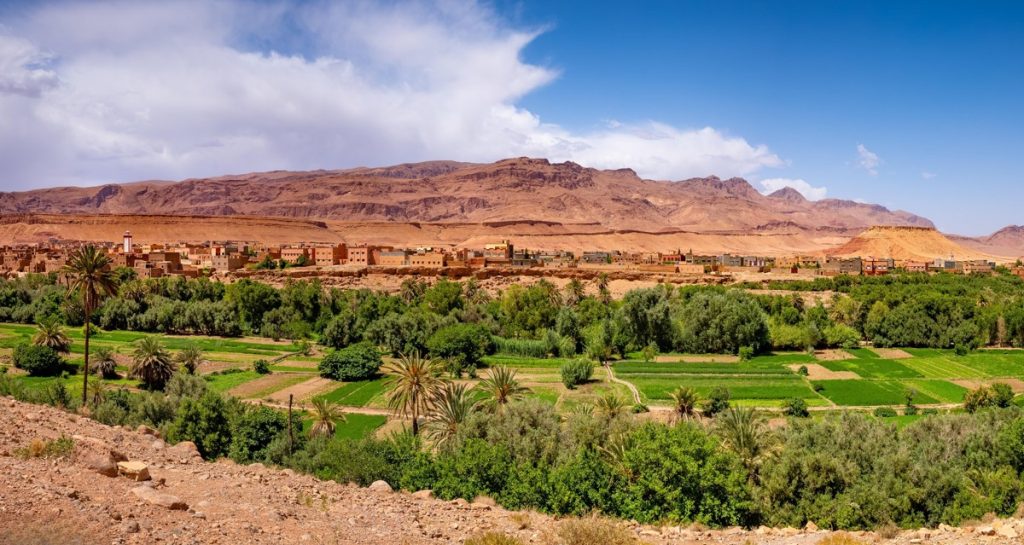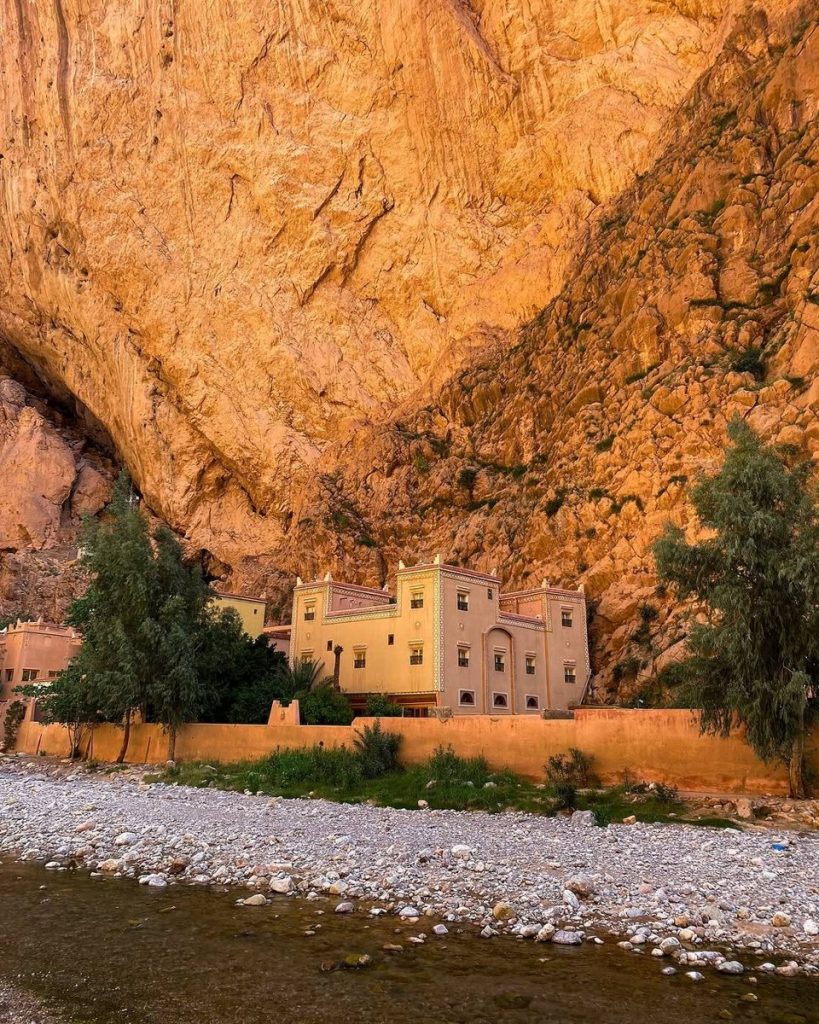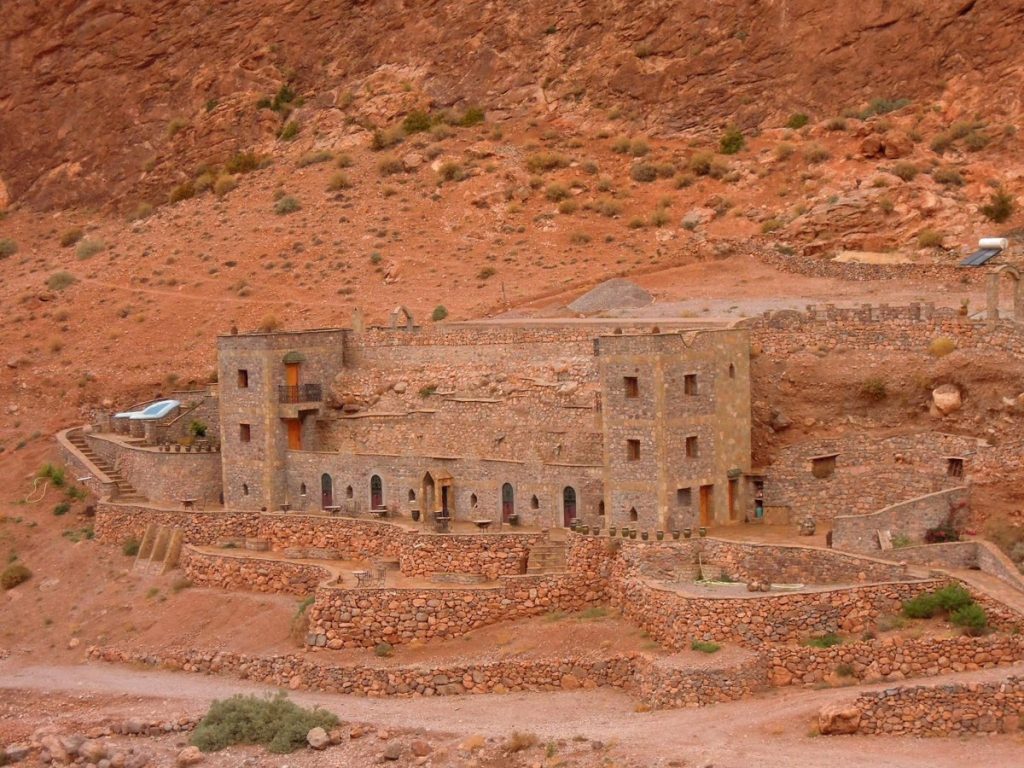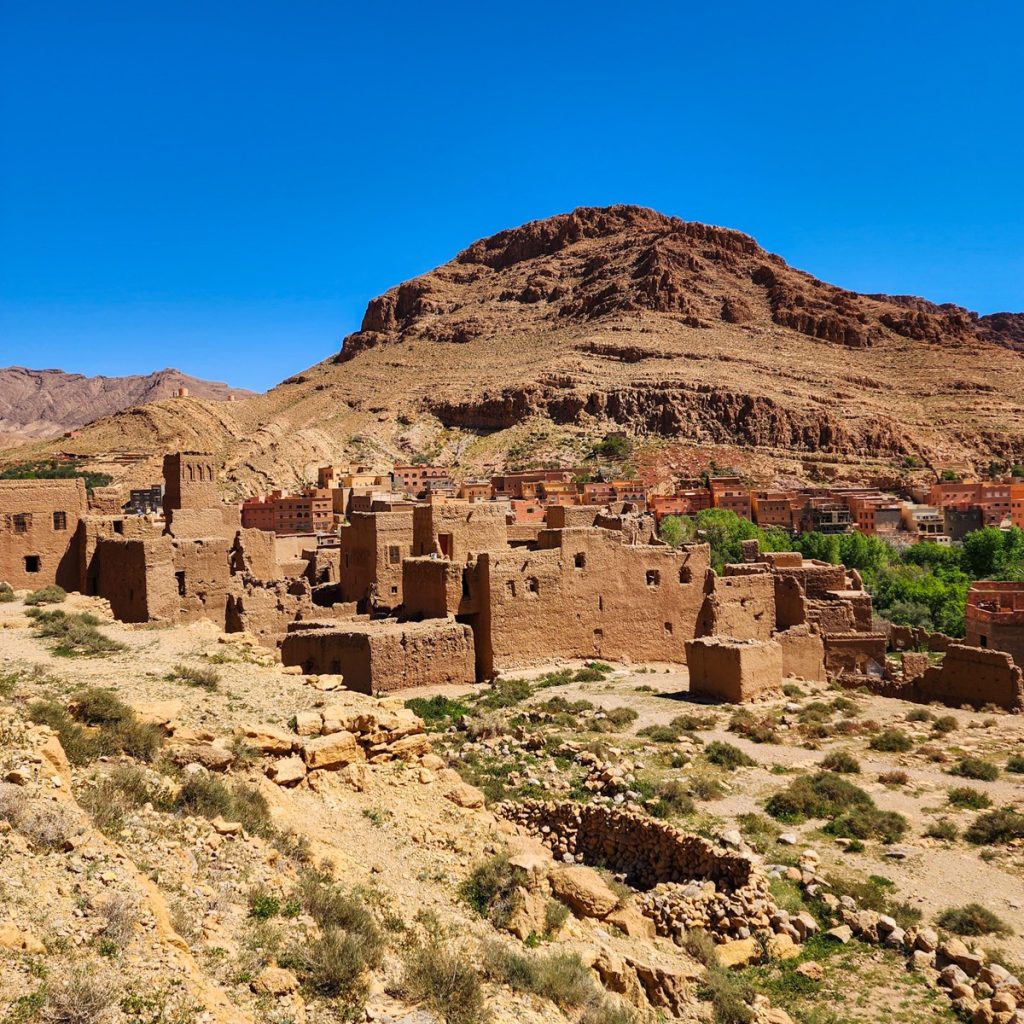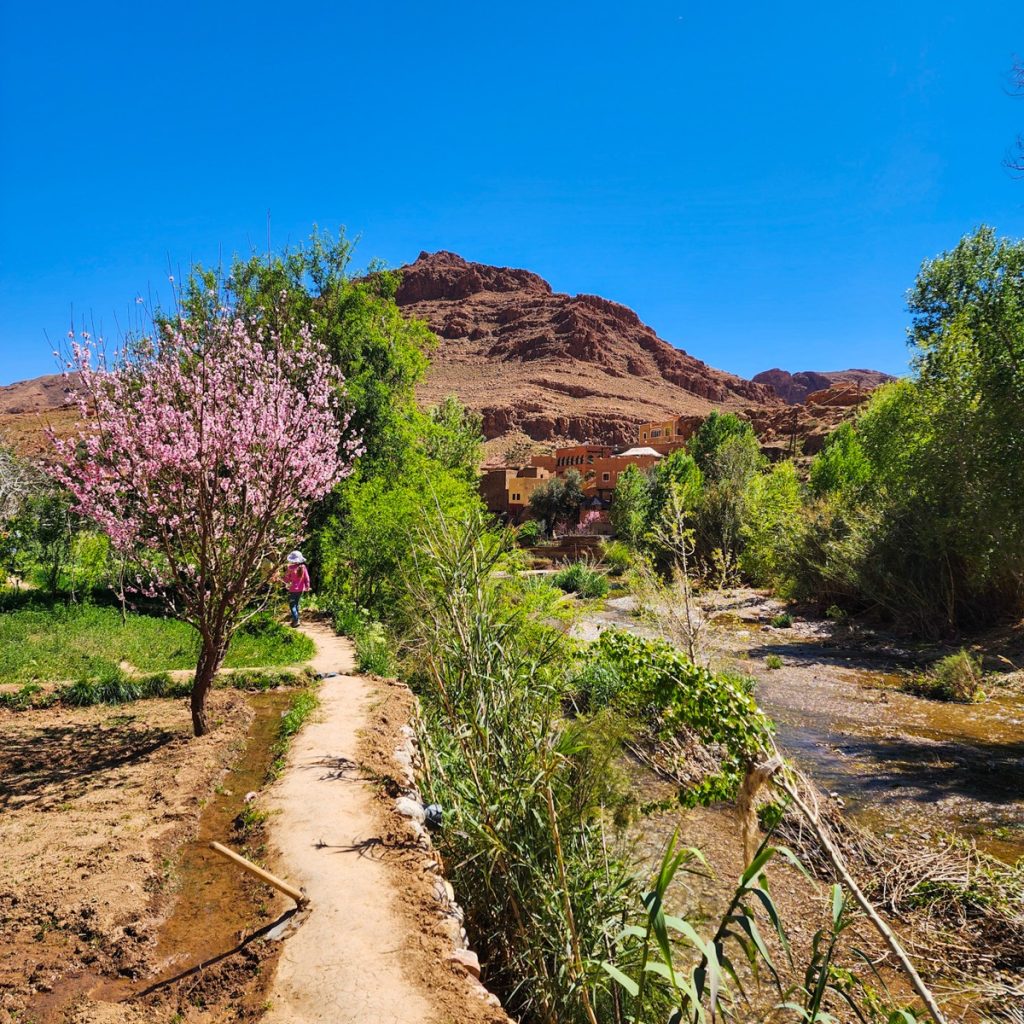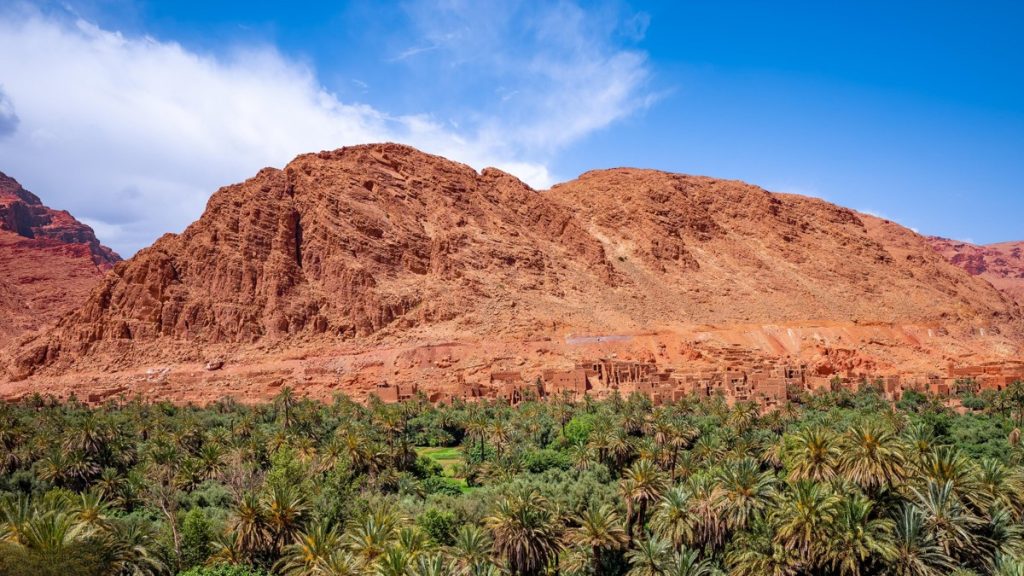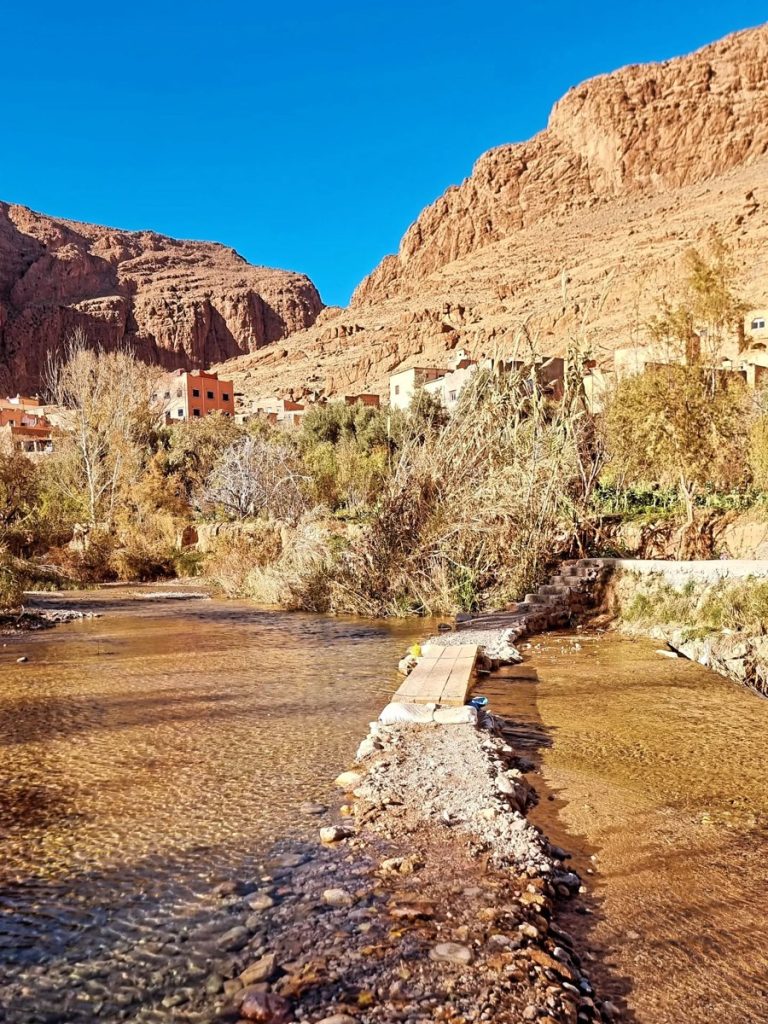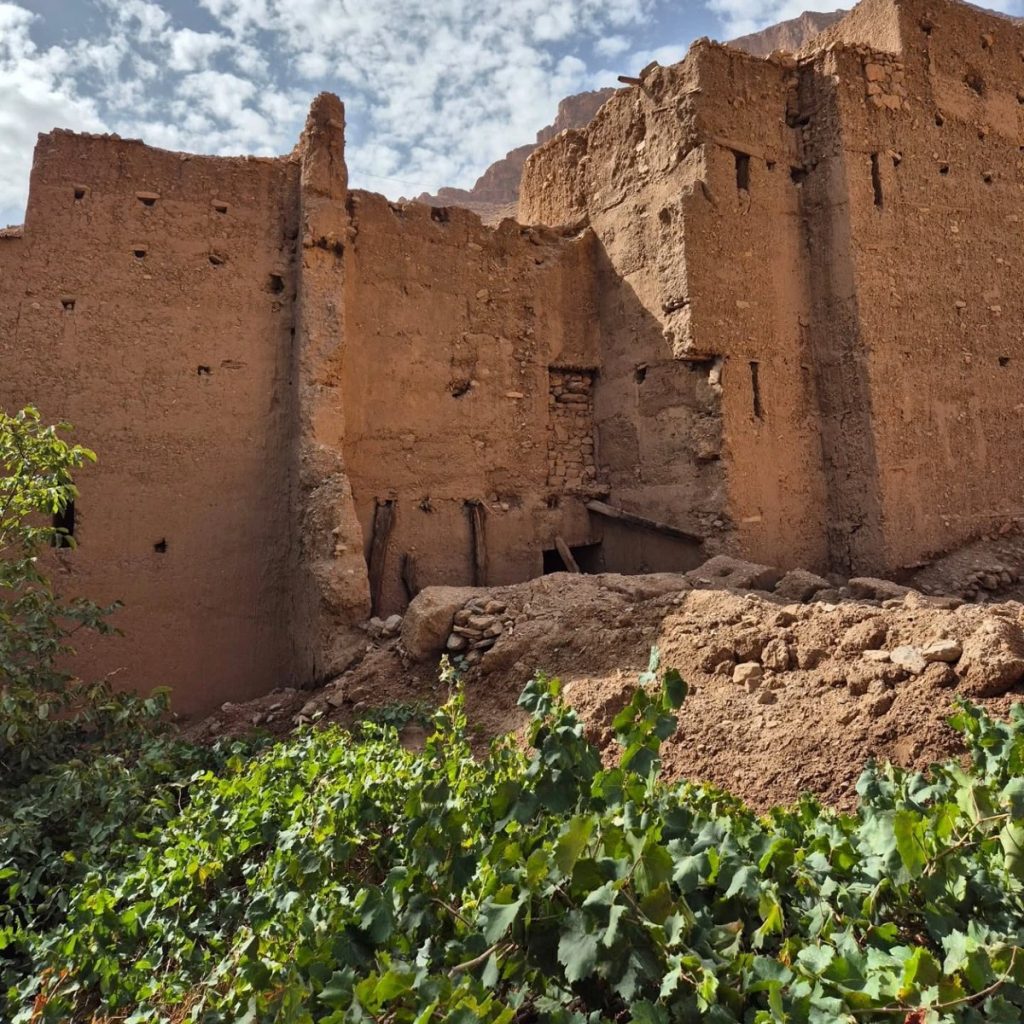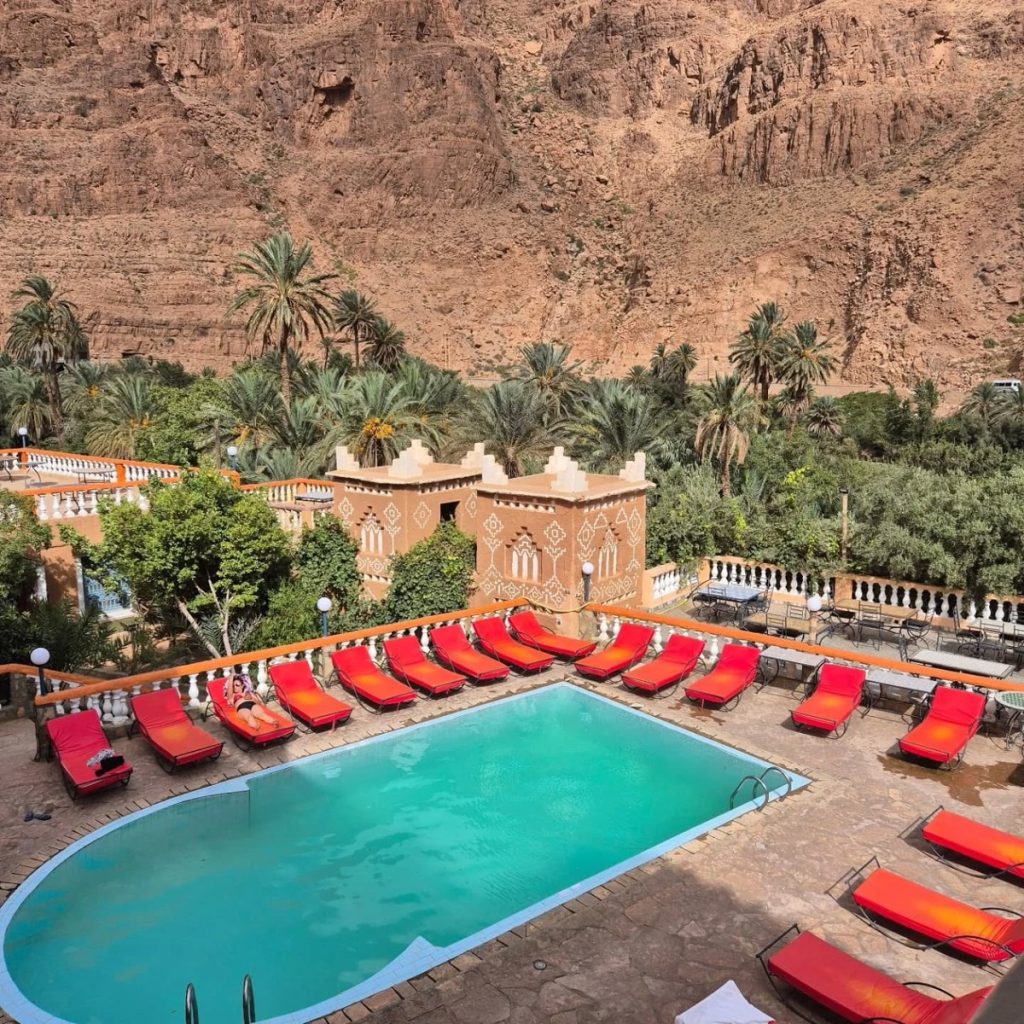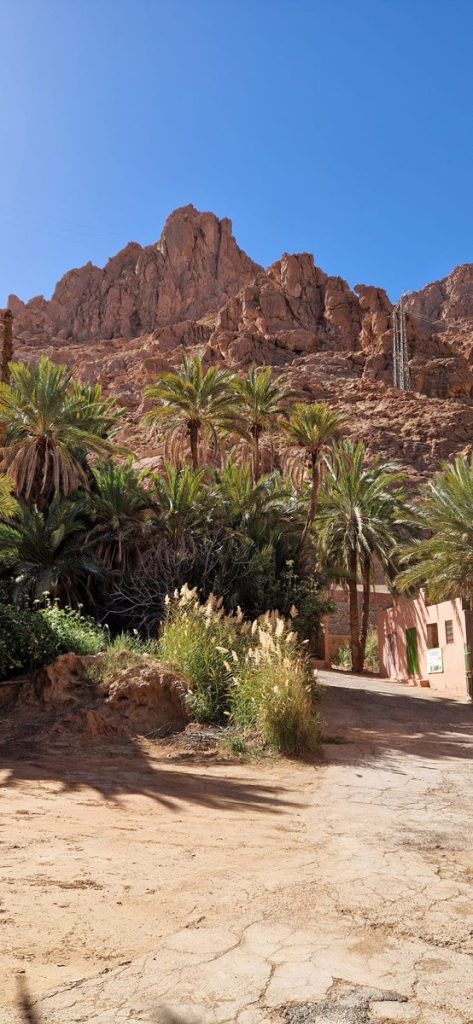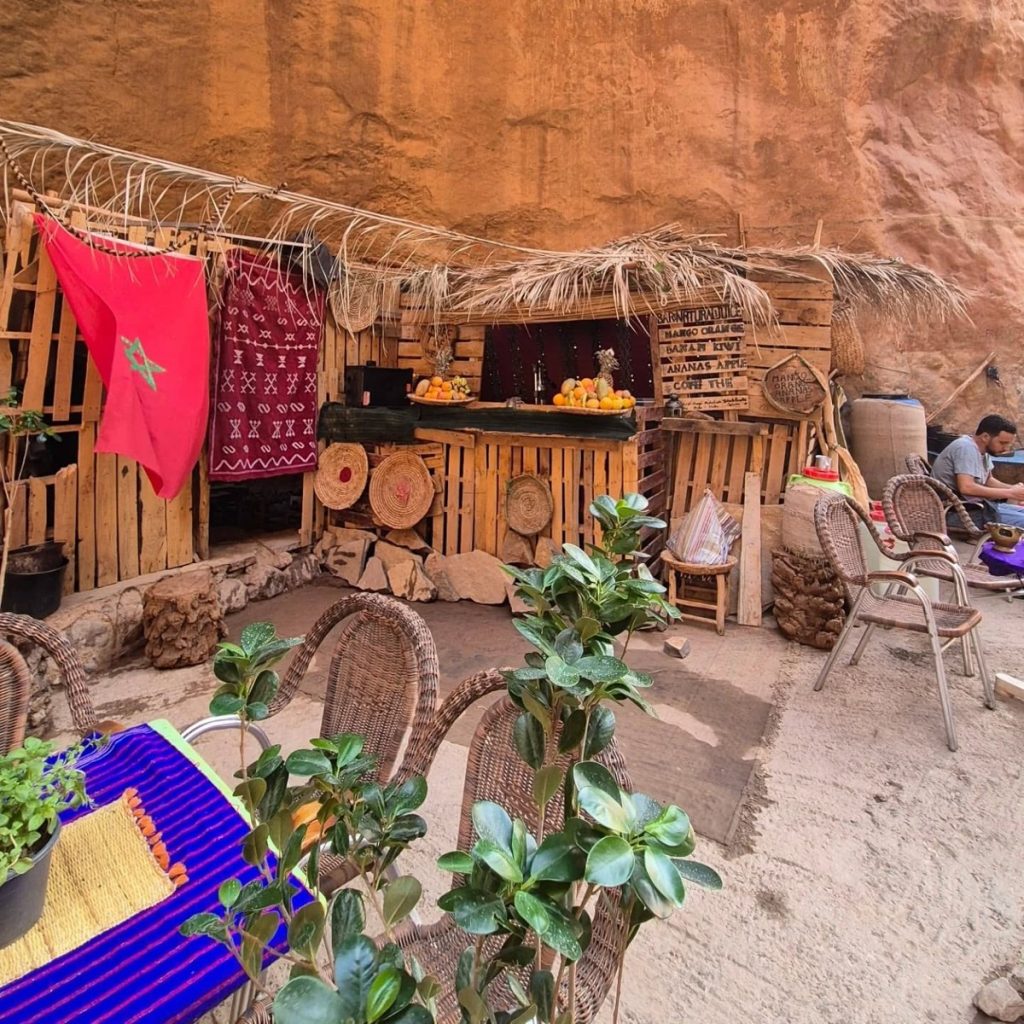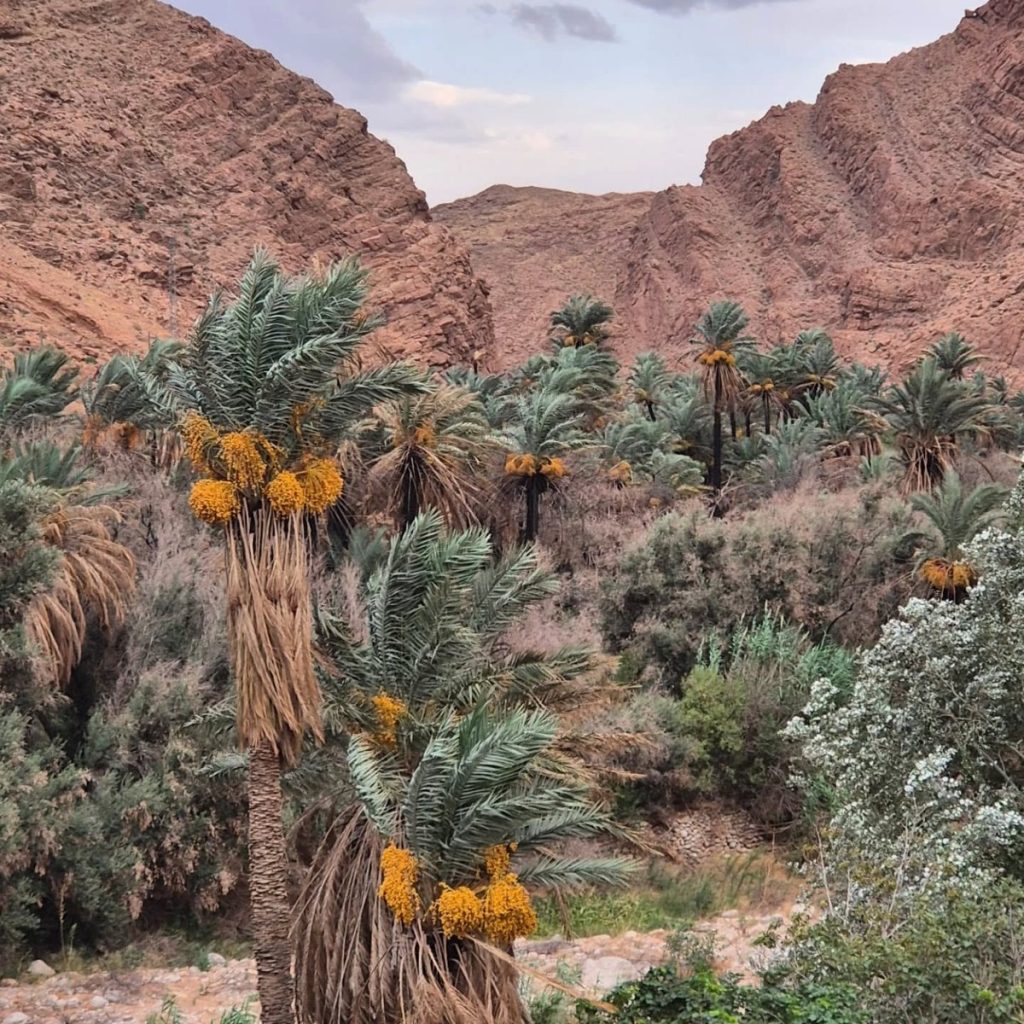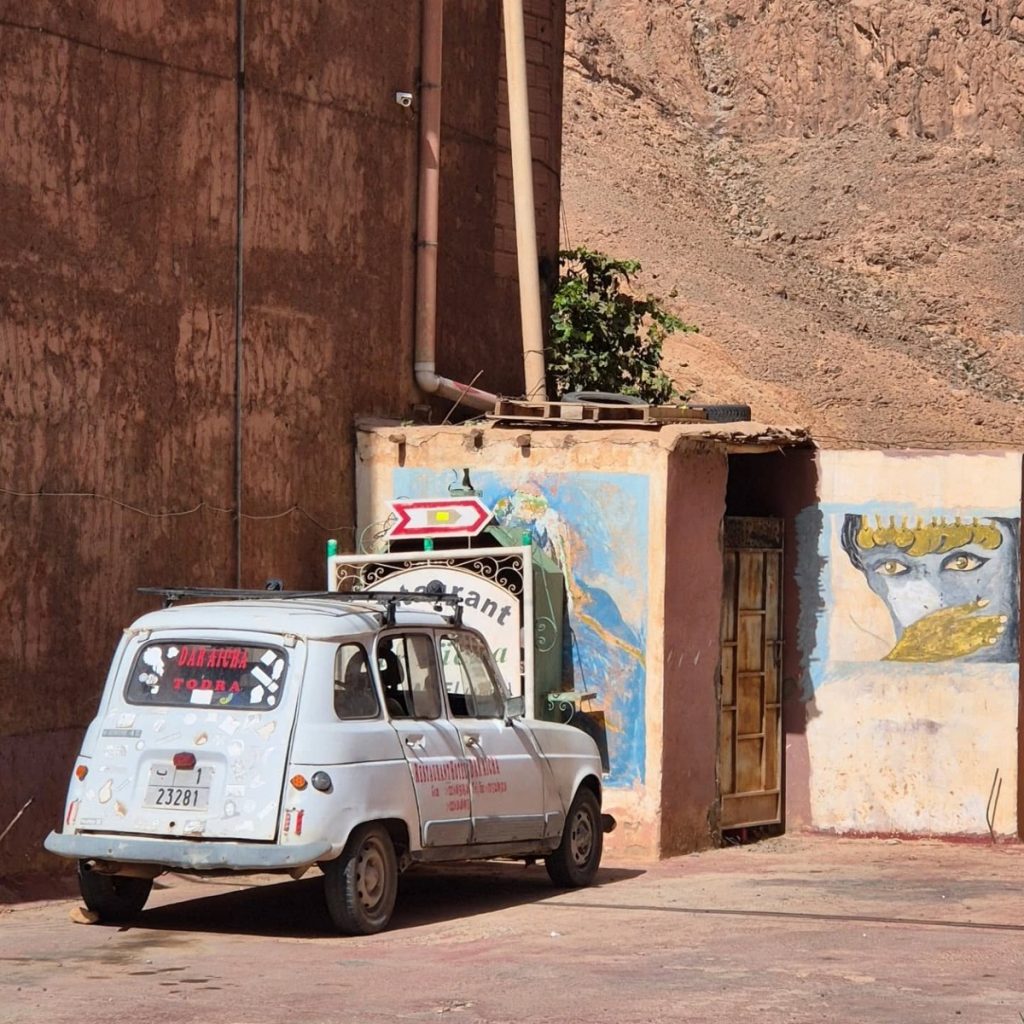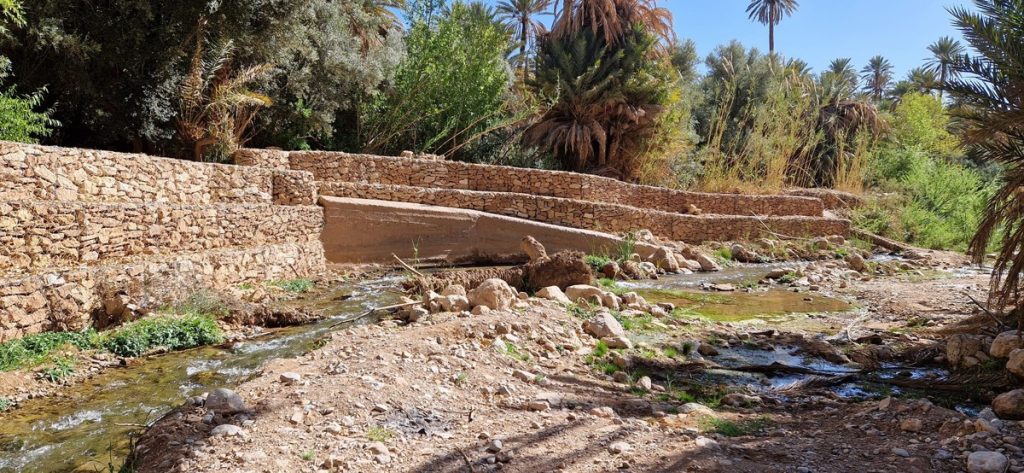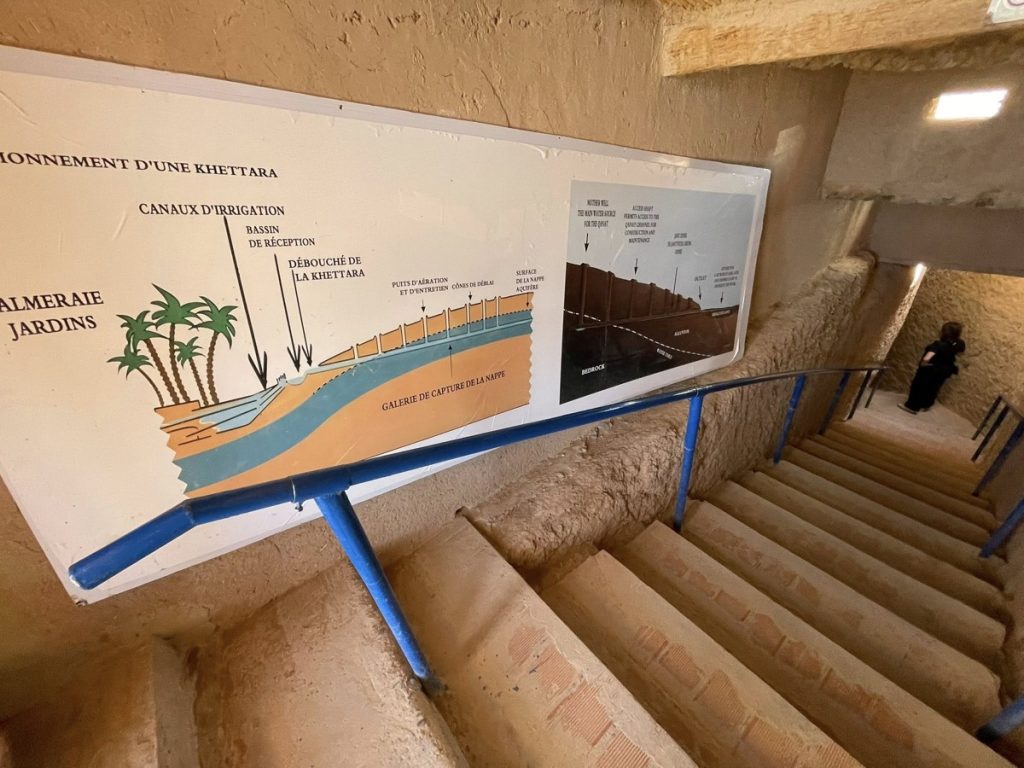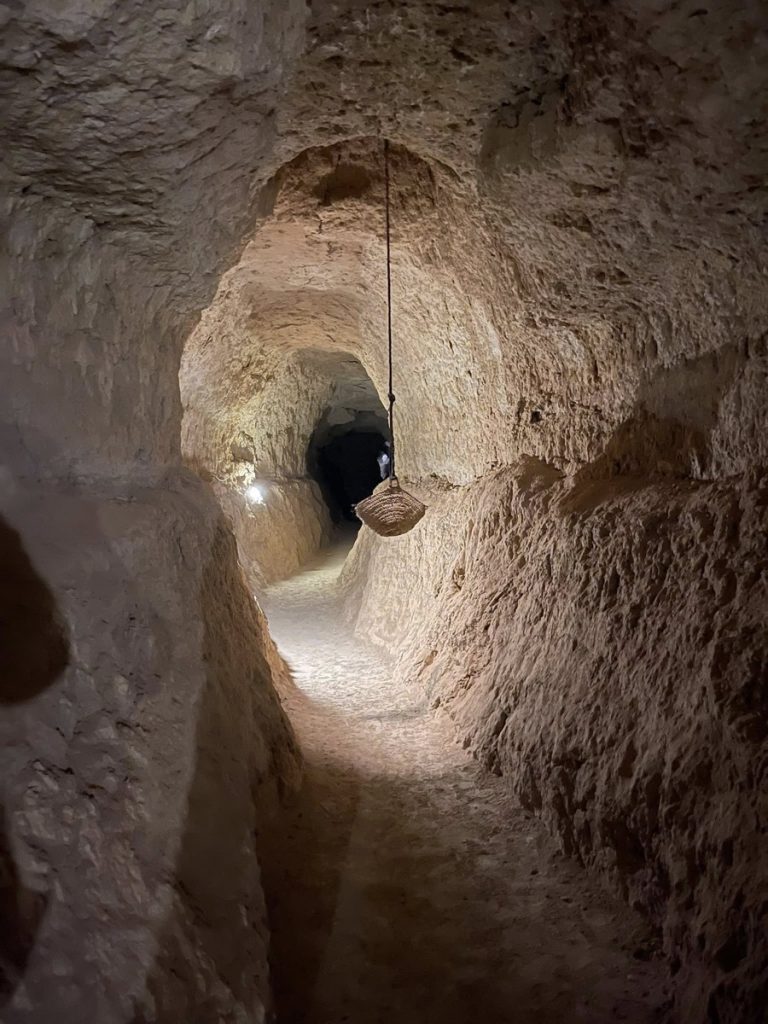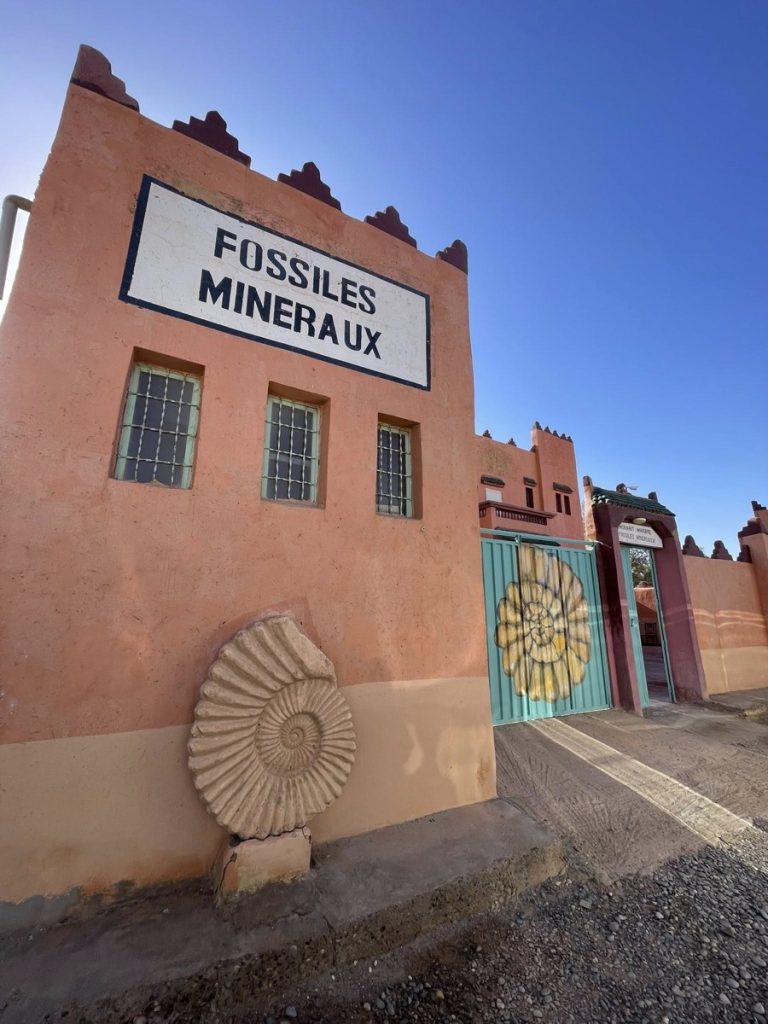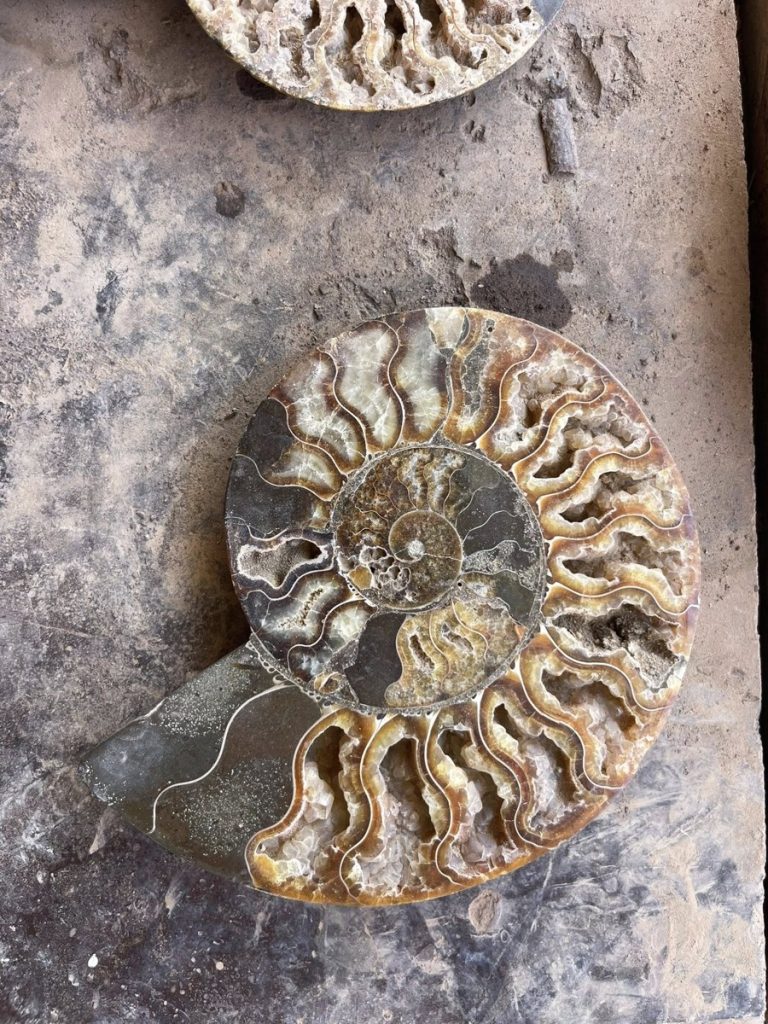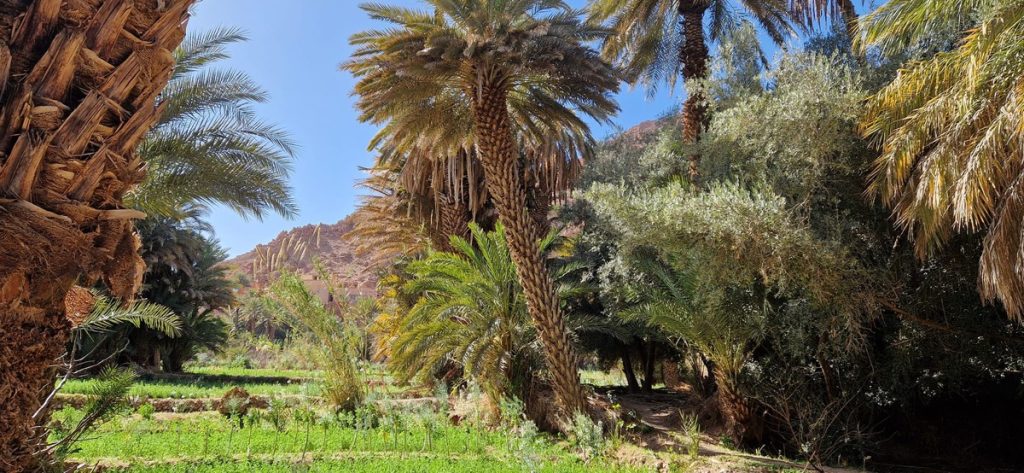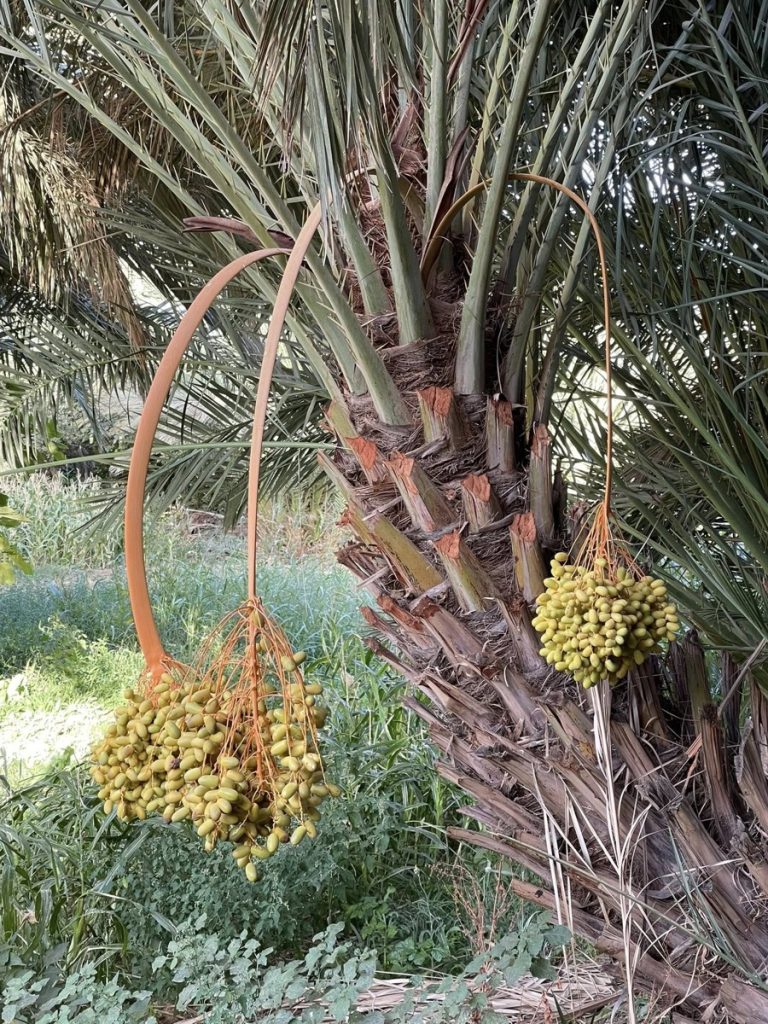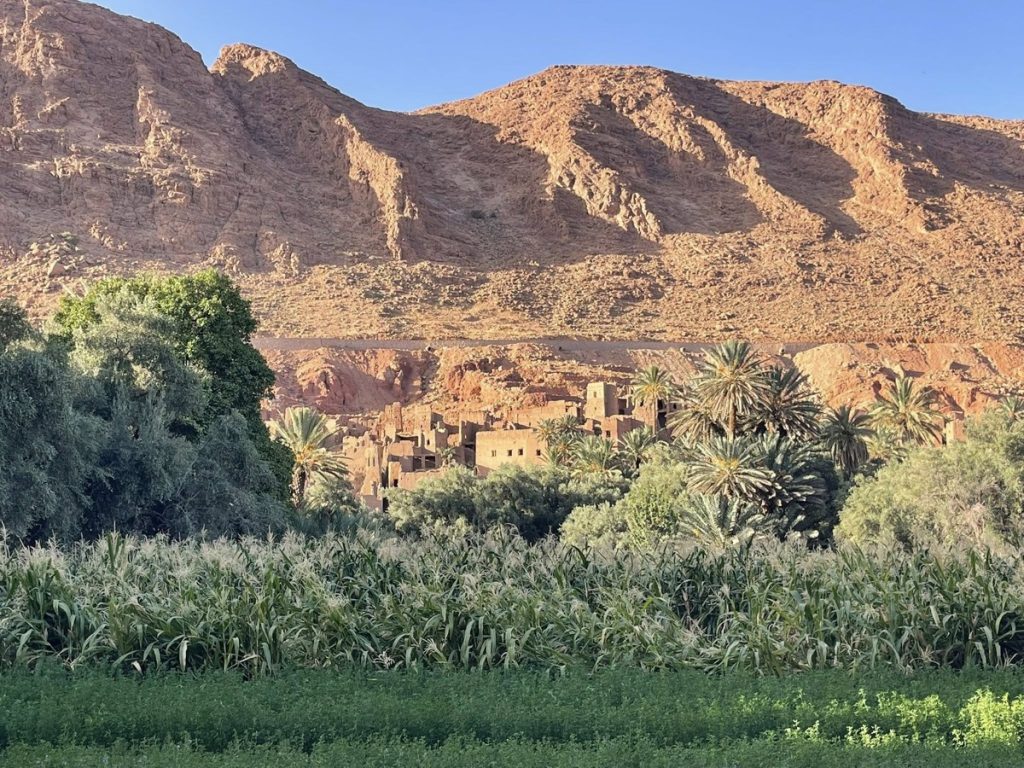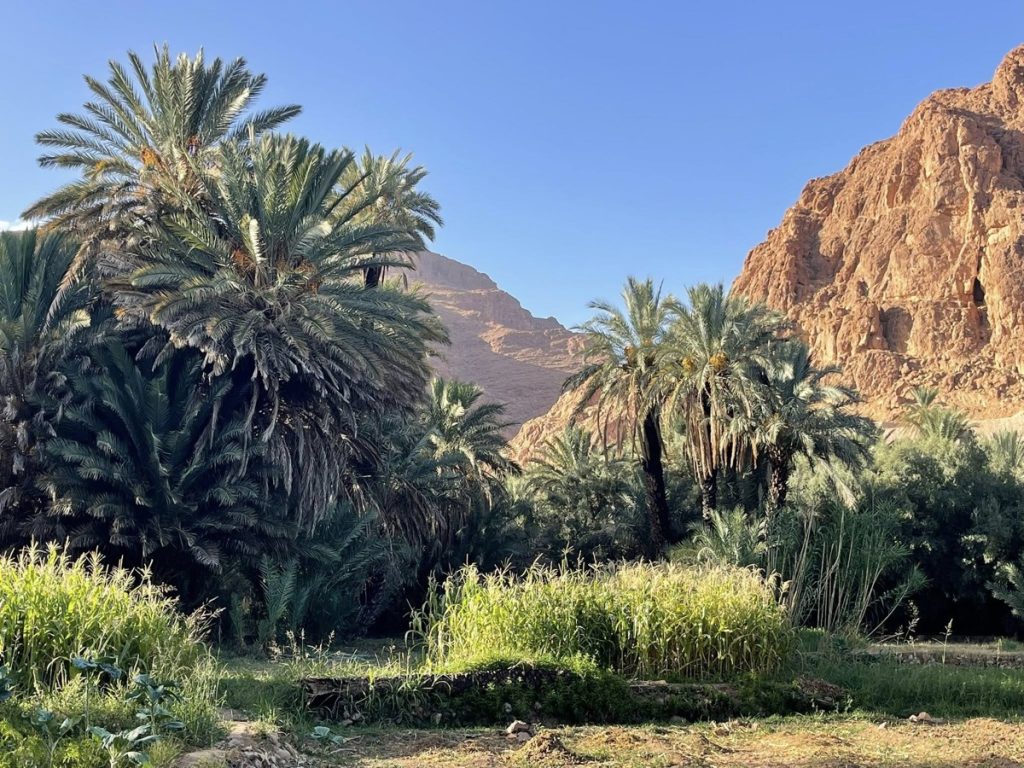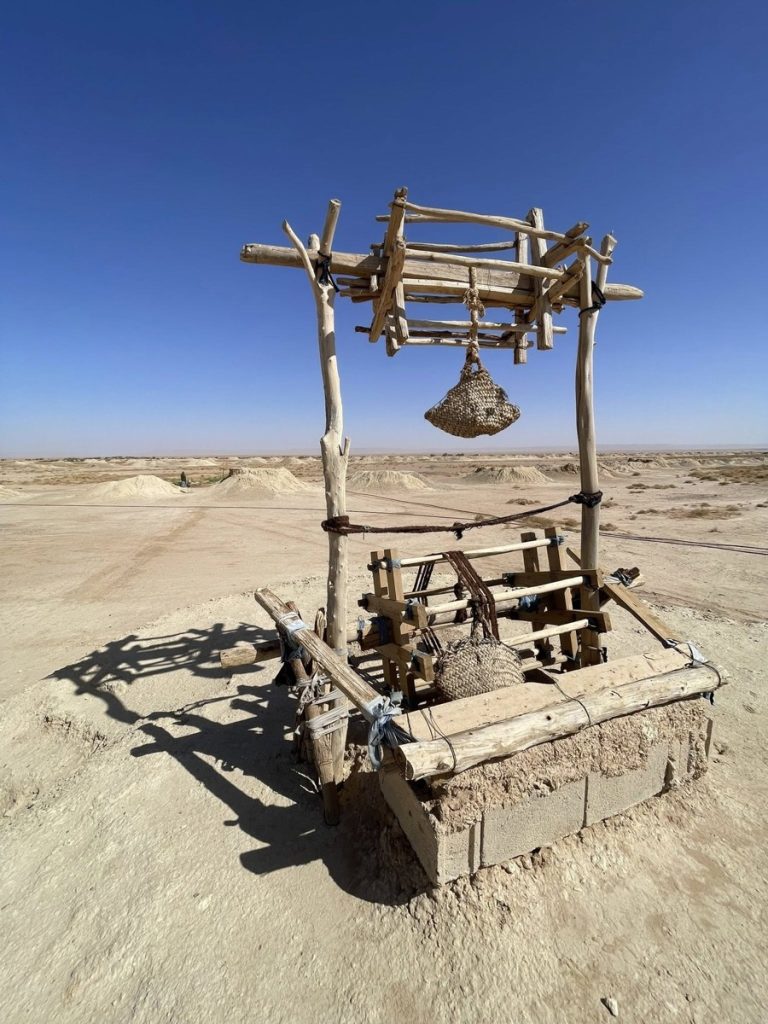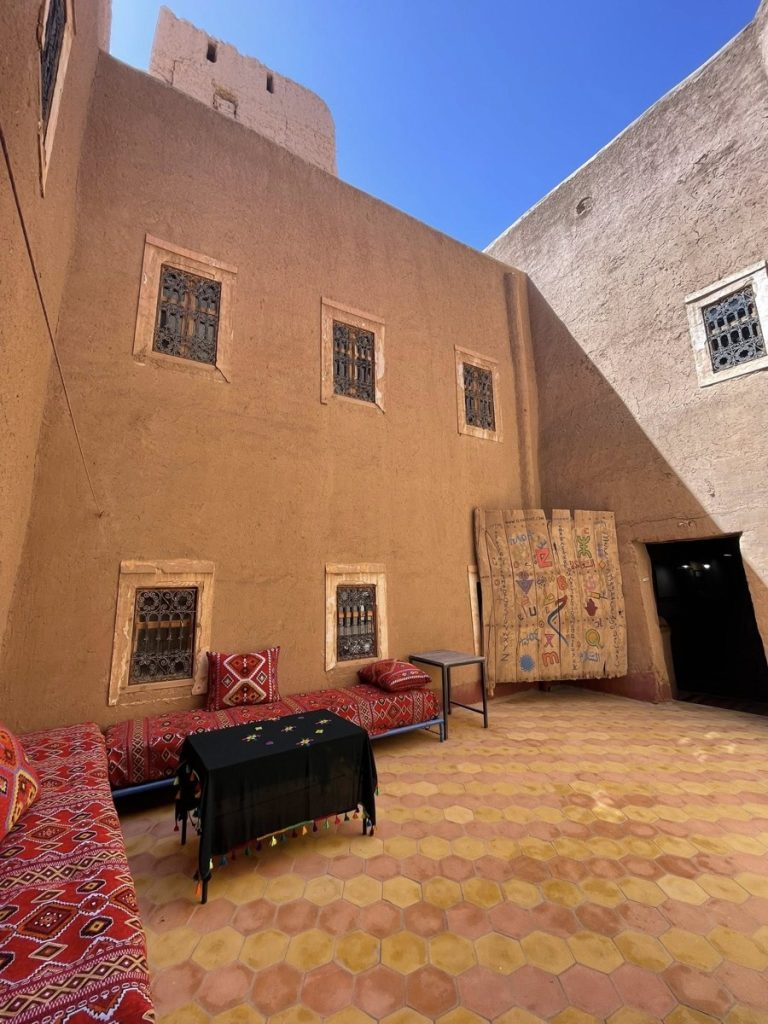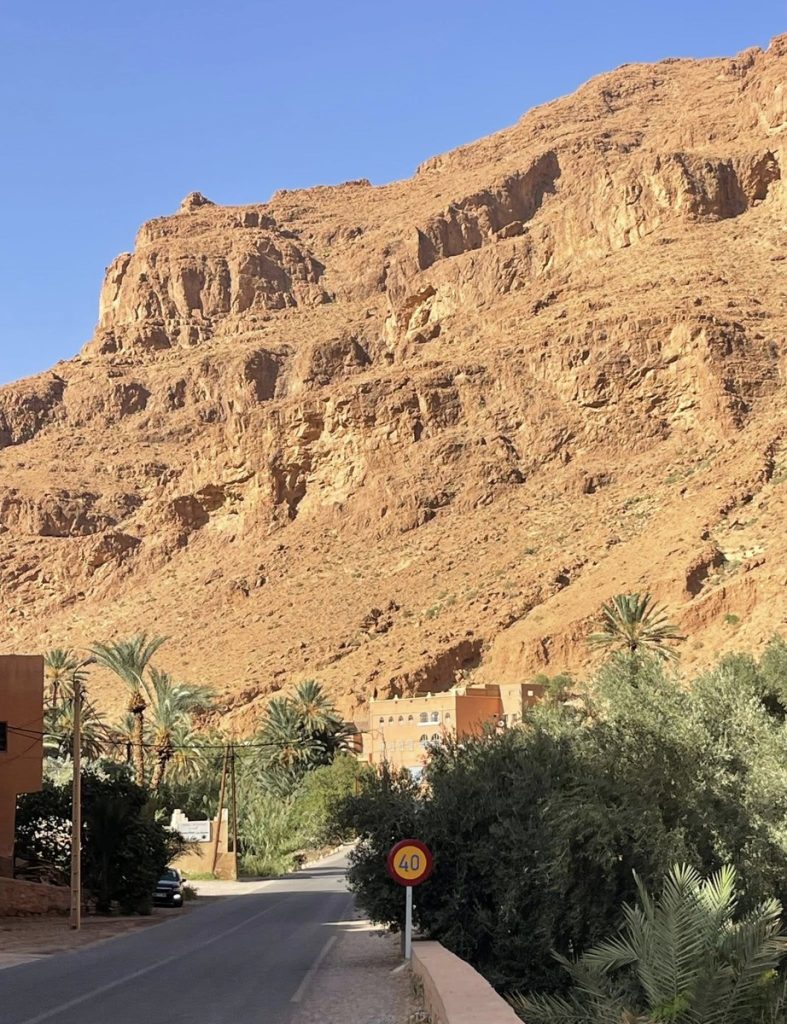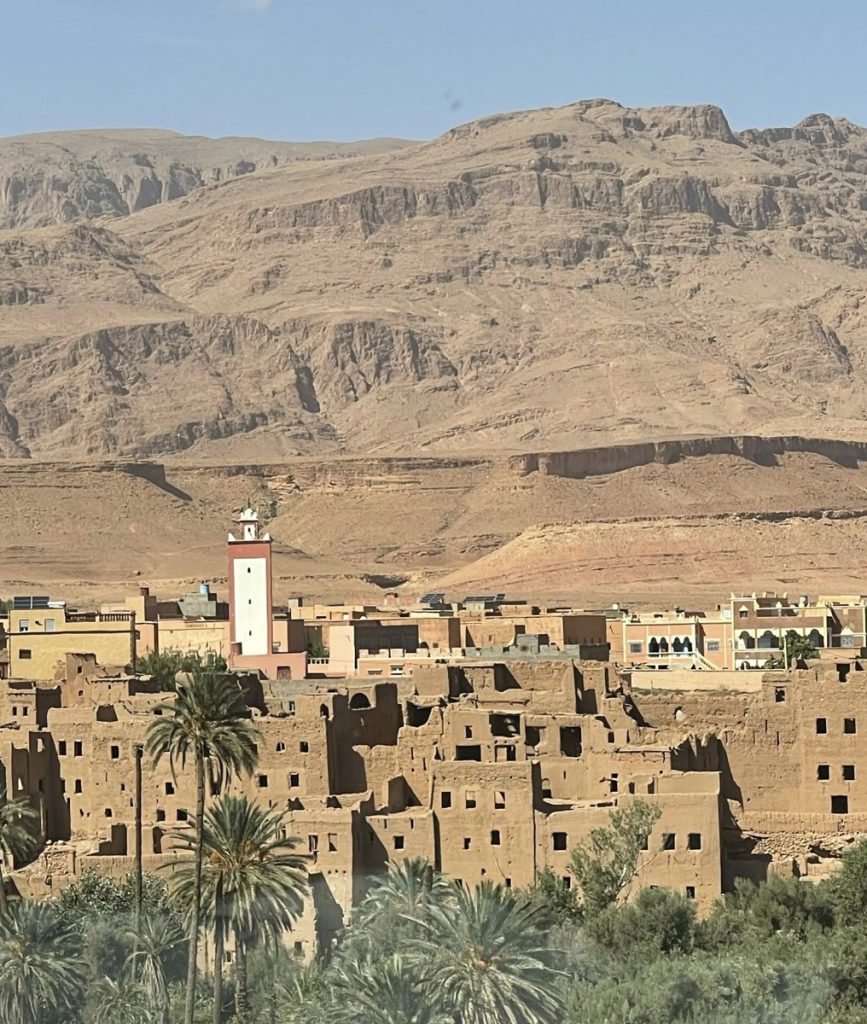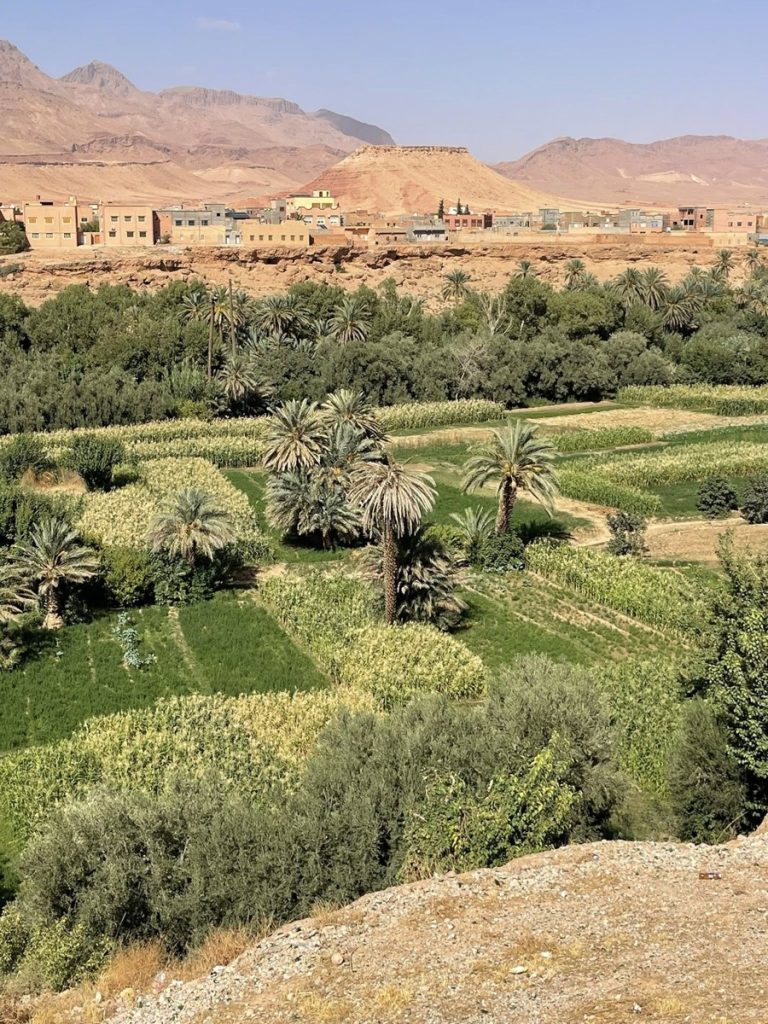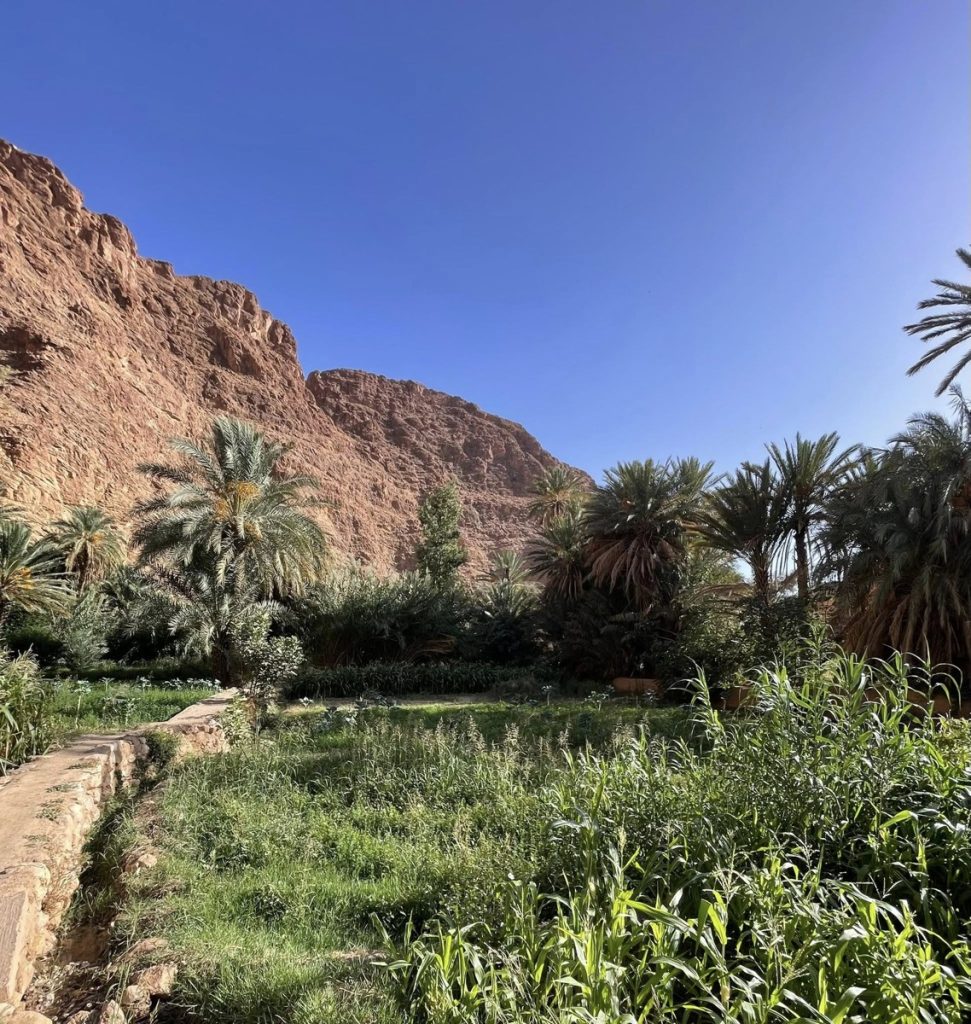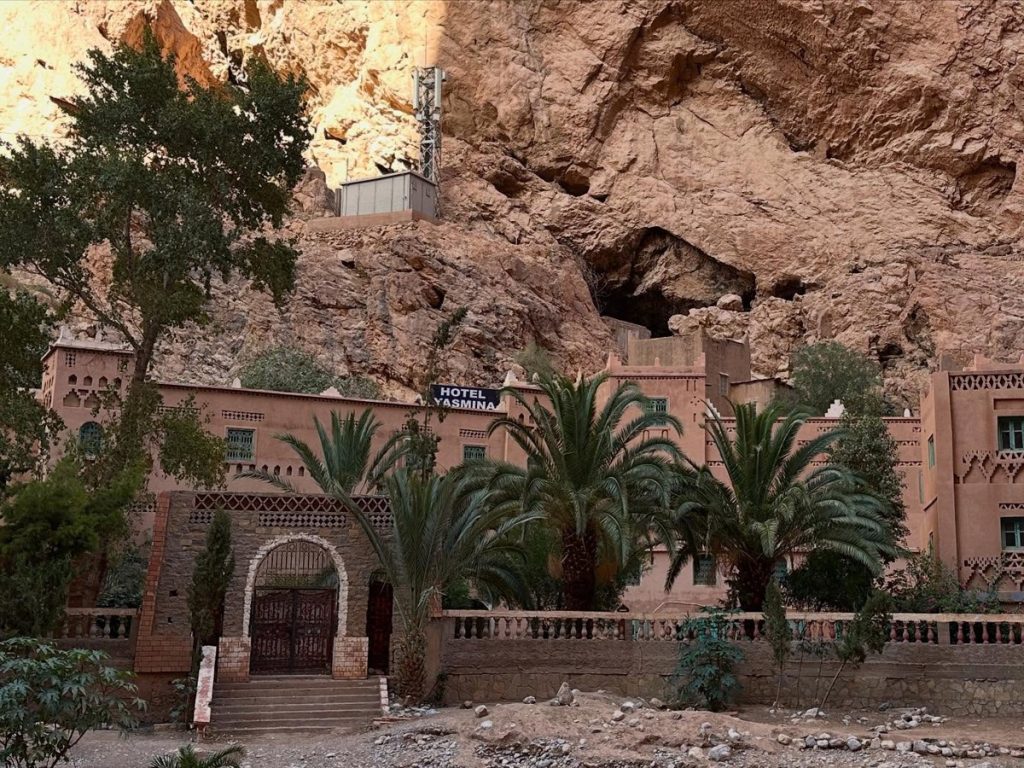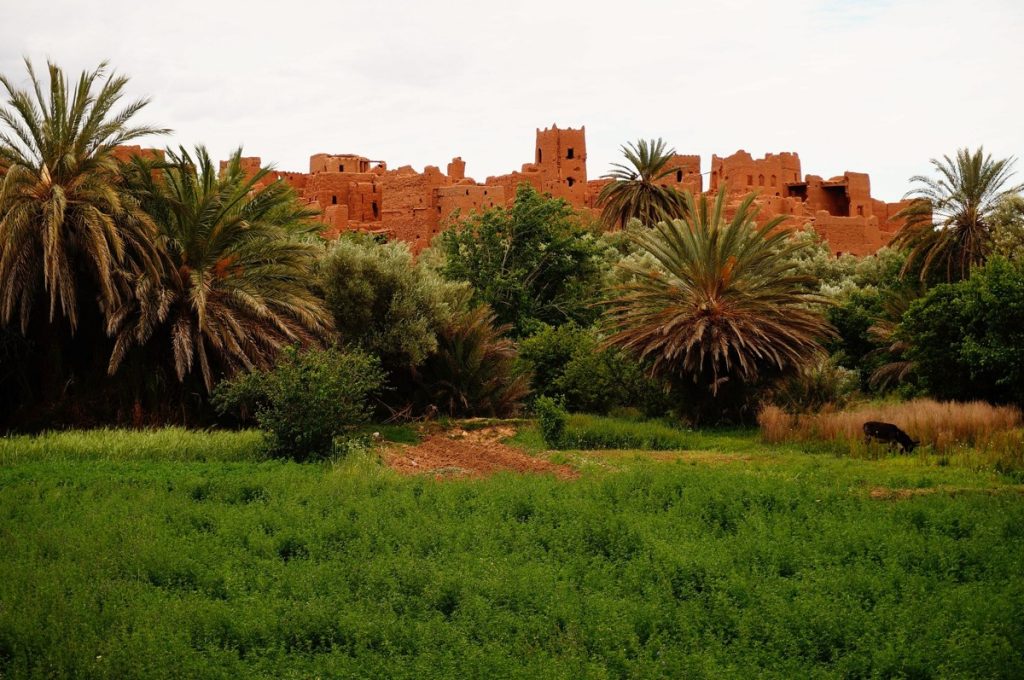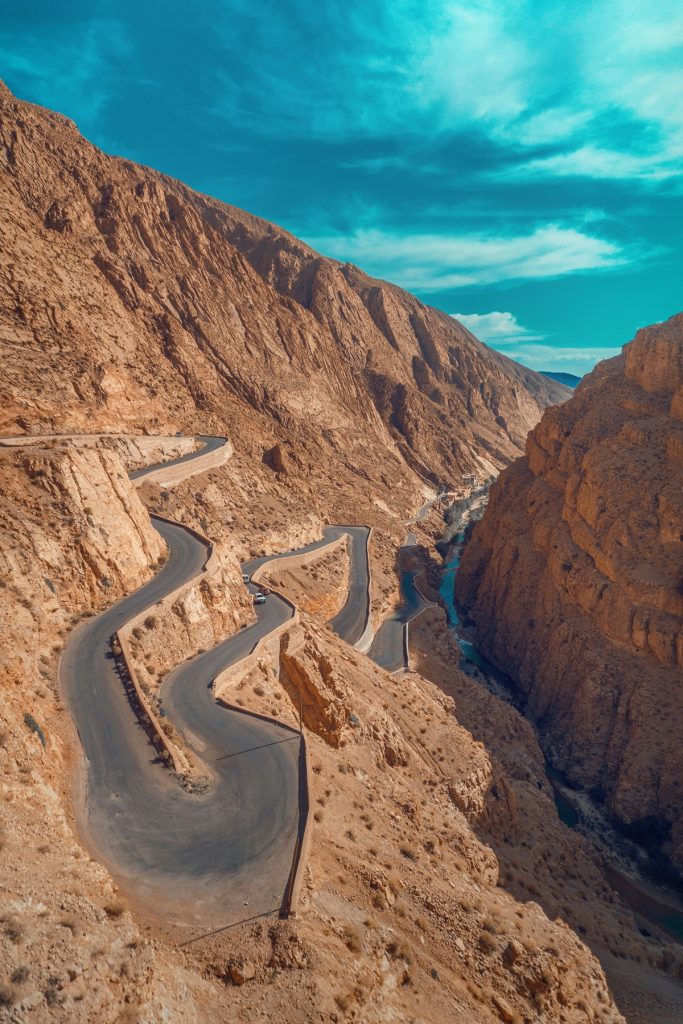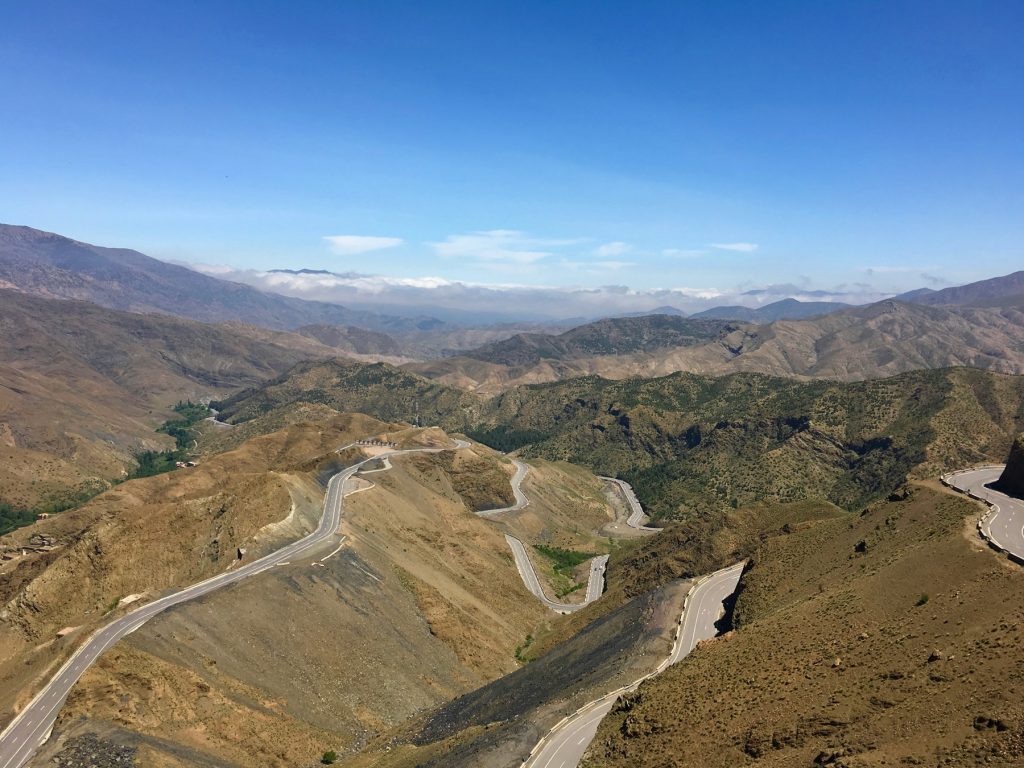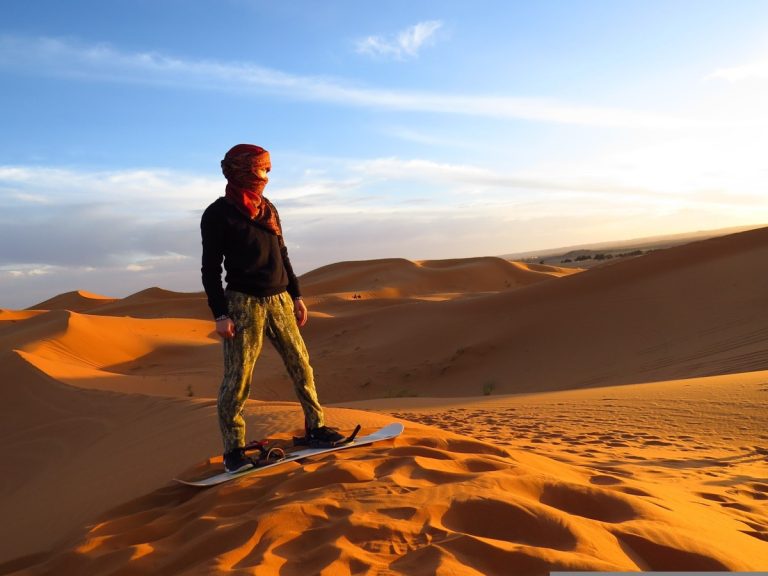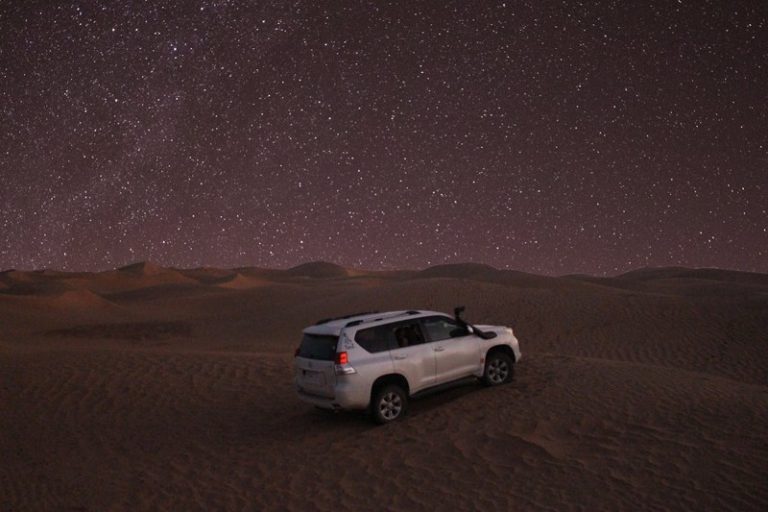Rock Climbing in Todra Gorge: A Journey Up Morocco’s Limestone Cathedral
Rock climbing in Todra Gorge isn’t just another tick on a climber’s bucket list—it’s a completely transformative experience that somehow manages to be both humbling and exhilarating at the exact same moment. I still remember my first glimpse of those towering limestone walls rising from the desert floor, the early morning light painting them in shades of amber and rose, and thinking to myself, “How on earth am I going to climb that?” But here’s the thing about Todra that I’ve come to understand after countless visits and climbs—this canyon doesn’t just challenge your physical abilities, it changes how you see what’s possible.
The Todra Gorge cuts through the eastern part of the High Atlas Mountains, like nature decided to create the perfect climbing playground. And I’m not exaggerating when I say perfect. The walls here rise up to 300 meters in some sections, creating this narrow canyon where the rock face is so close you feel like you could reach out and touch both sides (you can’t, but the illusion is incredible). What makes this place truly special—beyond the obvious visual drama—is that it offers something genuine for every single skill level, from someone who’s never touched a carabiner to seasoned climbers who’ve conquered faces across continents.
The Magnetic Pull of Morocco’s Vertical Wonderland
For several decades, the Todra Gorge has established itself as one of the best climbing spots in Morocco and even in North Africa—though calling it merely “one of the best” feels like an understatement when you’re actually there, fingers chalked, looking up at routes that seem to defy gravity. The diversity here is… well, it’s staggering. Over 400 bolted routes sprawl across the canyon walls, each one offering something different, something unique. I’ve climbed routes here that needed careful balance and footwork, and others where strength and willpower were the only things that mattered.
The limestone walls themselves are a geological gift. Unlike some climbing destinations where the rock quality varies wildly (and dangerously), Todra’s limestone is remarkably solid and reliable. You get this incredible variety of holds and surfaces—pockets, crimps, jugs, slopers—all naturally formed over millennia. Some routes feel like solving a vertical puzzle, where you’re constantly reading the rock, anticipating the next move. Others are more straightforward but no less rewarding, especially when you’re hanging from a ledge 100 meters up, catching your breath and taking in the view of the valley below.
What really strikes me about the diversity of routes here—in terms of both difficulty and technique—is how it makes Todra accessible without diluting the challenge. Beginners aren’t relegated to boring walls in some corner; they’re climbing the same magnificent limestone that experts tackle, just on routes graded for their level. And the variety matters more than you might think, because there’s something deeply motivating about starting your climbing journey in a place that’s genuinely spectacular rather than just… adequate.
A History Written on Stone (and Chalk)
French climbers, who recognized the potential of this gorge, established the first routes in the 1970s. I sometimes imagine them arriving here, likely after a dusty journey through the desert, and witnessing these walls for the first time with a fresh perspective. They didn’t know they were creating one of North Africa’s best climbing spots, but their pioneering spirit is felt on every route that bears their name.
Since those early days, the development of the route has been steady and well-planned. Over the decades, they have created many new routes, some reaching over 500 meters in length—absolute epics that require commitment, stamina, and proper planning. Todra truly shines in these multi-pitch climbs. I attempted my first multi-pitch here (a relatively moderate grade, thankfully), and the experience was… “intense” doesn’t quite cover it. You’re not just climbing anymore; you’re managing ropes, organizing gear, and communicating with your partner across distances, all while maintaining focus on the rock face. It’s exhausting and absolutely addictive.
But here’s what I appreciate about how Todra has developed: the new routes haven’t just been about pushing grades higher and higher. Route setters have put a lot of thought into making climbs that are simple and challenging. Yes, there are 8a and 8b routes that are very hard and will challenge even the most experienced climbers. But there are also well-made 5s and 6s that let intermediate climbers enjoy the beauty of these walls without being too scared.
Practical Wisdom: What You Actually Need to Know
Let’s talk specifics, because romantic descriptions only get you so far when you’re standing at the base of a cliff trying to figure out your next move. The routes in Todra range from approximately grade 4 to 8c in the French grading system (which is what’s used here). For those more familiar with the Yosemite Decimal System, that’s roughly 5.6 to 5.14c. The majority of routes fall in the 6a to 7a range, which makes the area an ideal destination if you’re solidly intermediate or looking to push into more advanced territory.
Sport climbing dominates the scene here—most routes are bolted, which means you’ll be clipping quickdraws into pre-placed bolts as you ascend. This is safer and more accessible than traditional climbing, where you place your protection, and it lets you focus on movement rather than gear placement. That said, some of the longer multi-pitch routes do require trad gear for certain sections, so if you’re planning to tackle those, you’ll need to come prepared or coordinate with local guides who can provide the necessary equipment.
The climbing season here is intriguing because it splits into two prime windows. Spring (March through May) is absolutely gorgeous—the weather is mild, wildflowers bloom in the valley, and the temperatures are perfect for long climbing days. I love climbing here in April when the light is crystalline and the rock isn’t too hot to touch. Then there’s autumn (September through November), which offers similar conditions. Summer can be brutally hot—we’re talking 40°C+ temperatures that make the rock too hot to hold comfortably, so most serious climbers avoid July and August. Winter is possible but chilly, especially in the mornings when you’re in the shadow of the canyon walls.
Learning the Vertical Dance: Schools and Guides
For beginners, several climbing schools are available in Tinghir and near the gorge itself, and honestly, this is where Todra really shines in terms of accessibility. Despite operating as businesses, these climbing schools do not solely aim to profit from tourists. Many of the teachers are real climbers who have spent years on these walls and want to share their love of climbing with new people.
The introductory courses typically cover everything you need to know: basic knots, belay techniques, movement fundamentals, and safety protocols. They begin with easier routes and work their way up to more difficult ones to help you gain confidence and skills. What I’ve noticed—and this is from observing dozens of beginners over the years—is that the instructors here are particularly adept at reading people, understanding when to push someone just beyond their comfort zone and when to pull back. That’s not a skill you can teach from a textbook.
There is also advanced training for people who want to strengthen their skills or get ready for harder routes. You might want to improve your ability to read routes, get better at climbing cracks, or build up your stamina for multi-pitch climbs before you start. Schools can address these needs by providing tailored lessons that aim to assist you in achieving your objectives.
Equipment rental is widely available, which is a godsend if you’re traveling from abroad and don’t want to lug climbing gear through airports. You can rent everything from climbing shoes to harnesses, helmets, quickdraws, and ropes—the full kit. The equipment I’ve rented has generally been in excellent condition, though I always do my own inspection because, well, my life depends on it. Don’t be shy about asking questions or requesting different gear if something doesn’t look right.
Local guides are worth their weight in gold here. Sure, you can climb independently if you’re experienced (and many people do), but hiring a guide—especially for your first few days—gives you access to insider knowledge that would take months to accumulate on your own. They know the best trails, when and where the sun shines on them, where the hardest parts of popular climbs are, and most importantly, they can keep you safe by keeping an eye on you. I’ve hired guides even when I didn’t really need to, just because their stories and local knowledge made the experience better.
The Gear Reality Check
Let’s be real about equipment for a moment. If you’re planning to climb seriously in Todra, you need to bring or rent proper gear, and you need to know how to use it. This isn’t a place where you can wing it with subpar equipment or technique. The basics include:
A well-fitting climbing harness that’s comfortable enough for all-day wear. Trust me, a cheap harness that cuts into your legs after an hour will ruin your entire experience. Your climbing shoes should be snug but not torture devices—you’ll be spending hours in them. I prefer slightly more comfortable shoes for Todra because the routes can be long, and I value being able to focus on climbing rather than my aching feet.
You’ll need a dynamic rope (a single rope in the 9.5-10 mm range is standard), a belay device (many climbers use assisted braking devices like the Petzl GriGri here for added safety), a helmet (non-negotiable—rockfall happens, and that limestone can be sharp), quickdraws (12-15 should cover most single-pitch routes), a chalk bag, and personal anchor systems for belaying at the top of pitches.
For multi-pitch routes, the gear list expands: you’ll want a second rope for rappelling, more quickdraws and slings, possibly some traditional protection depending on the route, prusiks or ascenders for emergency situations, and definitely a headlamp because these climbs can take longer than anticipated (speaking from experience on that one—getting off a route at dusk is not fun).
One thing I always pack that doesn’t show up on standard gear lists: athletic tape. The limestone here, while solid, can be sharp and abrasive. After a few days of climbing, your fingertips will appreciate the extra protection for those splits and hotspots.
Beyond the Climb: The Todra Experience
What many climbers don’t fully appreciate until they arrive is that climbing in Todra isn’t just about the routes—it’s about the entire environment you’re immersed in. The canyon itself is breathtaking, with walls that glow different colors depending on the time of day. Sunrise and sunset are particularly magical, when the limestone seems to catch fire with golden and red hues.
The village of Tinghir sits at the entrance to the gorge, about a 15-kilometer drive from the main climbing areas. It’s a traditional Berber town that maintains its authentic character despite the influx of climbers and tourists. I’ve spent many evenings in Tinghir, drinking mint tea in small cafes and watching people go about their daily lives. This intriguing balance comes from the difference between the rigorous physical and mental challenge of climbing and the slow, steady pace of village life.
Accommodation near the gorge ranges from basic campgrounds (perfect if you’re on a budget and don’t mind the rustic experience) to comfortable guesthouses and small hotels. Most climbers stay in places right near the walls, which is convenient but can get a bit scene-y, with everyone swapping beta and stories. I tend to prefer staying in Tinghir when I want a bit more space and quiet, but when I’m in hardcore climbing mode, being right at the gorge is undeniably practical.
The food situation deserves mention because, well, you need fuel for climbing. Moroccan cuisine is hearty and flavorful—lots of tagines, couscous, fresh bread, olives, and dates. The local guesthouses typically serve meals, and the quality can be surprisingly excellent. After long days of climbing, I’ve had some wonderful dinners with climbers from all over the world. We sat cross-legged on cushions and shared food. There’s something about a shared physical challenge and shared meals that creates quick bonds between strangers.
The Routes That Changed Me
I want to share some specific route recommendations because generic advice only goes so far. For beginners or those warming up, “Petit Délice” is a beautiful 6a route that gives you a taste of Todra’s character without being overwhelming. The movement is intuitive, the protection is adequate, and the position is exposed enough to feel exciting but not terrifying.
Moving into intermediate territory, “La Balade de la Fatigue” (roughly 6c) is a classic that every climber seems to attempt eventually. It’s sustained and pumpy—your forearms will be screaming—but the moves are all doable if you can maintain your composure. I’ve seen this route humble experienced climbers and reward persistent beginners who just refuse to give up.
For advanced climbers, “Logiciel Equestre” (7c+) is stunning but brutal. The route demands both technical precision and raw power, with a crux section that feels impossible until suddenly it doesn’t. I watched a friend work this route for three days straight, falling repeatedly at the same move, before finally sending it. The celebration was… intense.
The multi-pitch routes are in their category entirely. “Touareg” is a magnificent multi-pitch around 6b that takes you several hundred meters up the wall. The exposure is real—you’re hanging from tiny ledges with nothing but air beneath you—but the climbing is consistently engaging without being desperate. I did this route with a partner last spring, and we spent five hours on the wall, completely absorbed in the process. When we reached the top and looked back, I felt proud of what my body and mind could do.
The Challenge of Vertical Living
Let me be honest about something that guidebooks often gloss over: rock climbing in Todra Gorge is demanding in ways that go beyond the physical routes. The mental game here is intense. When you’re 50 meters up a wall and you’ve just clipped the last bolt, your arms are tired, and the next section looks impossibly difficult, you face a decision point that’s as much psychological as physical. Do you push through the discomfort and fear? Do you rest and gather yourself? Are you able to recognize when you’re overextended and at risk of falling?
I’ve dealt with all these scenarios, sometimes on the same climb. Every climber knows that moment when your rational brain says to retreat, but something deeper says, “Try one more move.” Todra has taught me to listen to both voices and make better decisions about which one to follow.
The physical challenges are obvious: sustained endurance, finger strength, core stability, and footwork precision. But the mental challenges are what separate climbers who progress from those who don’t. It takes time to learn how to stay calm when you’re excited, trust your feet on small edges, and stick with moves that make you nervous. You get better at these things by doing them over and over again in difficult situations.
Seasons, Weather, and Practical Logistics
The best time to climb Todra depends entirely on what you value. If you want perfect weather and don’t mind crowds, come in April or October. The temperatures hover in the low-to-mid 20s Celsius (70s Fahrenheit), the sun is pleasant rather than punishing, and the rock conditions are ideal. However, these are also the busiest months, so popular routes will have queues, and the social scene can feel a bit overwhelming if you prefer solitude.
May and September offer similar conditions with slightly fewer people. November through February is the off-season for good reason—it’s cold, especially in the mornings when the sun hasn’t reached the canyon floor yet. I’ve climbed here in December, and while the afternoon climbing was lovely once the sun emerged, the morning sessions required multiple layers and a lot of willpower to get started. Some climbers prefer this period due to the quieter gorge and cheaper accommodation, but they should be ready for challenging conditions.
Getting to Todra requires some planning. Most international travelers fly into Marrakech or Casablanca, then either rent a car or combine buses and taxis to reach Tinghir. The drive from Marrakech is about 350 kilometers long and takes 6 to 7 hours, depending on the condition of the roads and any stops you make. I’ve driven this route many times. It’s long, but the views are wonderful. You drive through mountain passes over the High Atlas, down into desert valleys, and watch the landscape change from green mountains to dry plains.
Renting a car gives you flexibility but requires confidence driving on Moroccan roads, which can be… adventurous. The main highways are generally fine, but once you get into mountain passes, the roads narrow, the drops are significant, and other drivers have their own interpretation of traffic rules. If you’re not comfortable with this, the bus system is reliable, though less flexible.
Cultural Context and Respect
One aspect of climbing in Todra that I think deserves more attention is the cultural dimension. You’re climbing in Morocco, in a region that’s predominantly Berber, and while the locals are generally welcoming to climbers, there are cultural sensitivities to respect. Dress modestly when you’re in villages—this means covering shoulders and knees, especially for women. Climbing attire is fine at the crags, but walking through Tinghir in tiny shorts and a sports bra will draw unwanted attention and disrespect local norms.
Learn a few simple words in Arabic or Tamazight, which is the Berber language. “Salam alaikum” (peace be upon you), “shukran” (thank you), and “afak” (please)—these small things show that you care. I’ve had many positive experiences that started with my terrible attempts to speak the local language and ended with warm laughter and real connection.
The local economy benefits from climbing tourism, but be mindful of how you engage. Pay fair prices for services and goods (don’t haggle everything down to the absolute minimum), hire local guides when possible, and support local businesses rather than bringing everything from abroad. These climbing walls belong to this community’s landscape, and we’re guests here.
Safety Considerations That Matter
Rock climbing is inherently risky, and Todra presents its own specific hazards that you need to understand. Rockfall is a real concern—the limestone is generally solid, but loose rock exists, especially on less-traveled routes or after winter weather. Always wear a helmet, and be conscious of other climbers above you. I’ve had rocks come down near me twice, and both times my helmet saved me from what could have been serious injury.
The sun exposure in the canyon can be deceptive. You might be climbing in shade, but the reflection off the walls intensifies UV radiation. I’ve gotten sunburned in places I didn’t think possible. Use high-SPF sunscreen, reapply frequently, and consider long sleeves for protection during longer routes.
Dehydration is another sneaky danger. You’re exerting yourself intensely in a dry climate, and you might not realize how much fluid you’re losing until you’ve already compromised. I bring at least two liters of water for a day of climbing, more if I’m attempting multi-pitch routes. Some climbers use hydration packs, which are convenient but can be awkward when you’re wearing a backpack full of gear.
If something goes wrong—injury, stuck ropes, getting benighted on a route—rescue resources are limited. Mobile phone coverage is spotty at best. This isn’t a place where you can expect helicopter rescue within the hour. Climbing here requires self-sufficiency and excellent judgment. Don’t attempt routes beyond your ability, don’t climb alone unless you’re extremely experienced, and always have a backup plan.
The Intangible Rewards
After all this practical advice and route descriptions and gear lists, I want to circle back to something more fundamental: why climb here at all? There are easier destinations, places with better infrastructure, and locations closer to home. But Todra Gorge offers more than just convenience; it offers change.
Every time I visit, I leave different than I arrived. Occasionally the change is physical: I’m stronger, my technique has gotten better, and I’m more sure of myself on steep ground. But most of the time, it’s harder to measure the change. It’s about facing your fears and getting through them. It’s about finding strength you didn’t know you had. It’s about the deep satisfaction that comes from finishing something that was really challenging and where failure was a real possibility.
There’s also something deeply humbling about climbing these ancient walls. The limestone beneath your fingers is millions of years old, shaped by geological forces beyond human comprehension. The Berber people have lived in this valley for countless generations, long before climbers arrived with their ropes and quickdraws. Your fleeting presence in a landscape that endures long after your departure is both humbling and liberating.
The fact that climbers from all over the world come here makes it even more captivating. I’ve climbed with people from France, Spain, Germany, Japan, Australia, and the United States. These people came from very different backgrounds but shared a love of climbing. Some of my most memorable conversations have happened on rest days, lounging in the shade, swapping stories about other climbing destinations and life philosophies and everything in between.
Final Thoughts From the Belayer’s Perspective
If you’re thinking about rock climbing in Todra Gorge, my advice is simple: be ready, but don’t plan too much. Bring the right gear or rent it locally. If you’re uncertain, it would be advisable to hire a guide. Start with lower-grade routes to get a feel for the rock, then see where it takes you. Some of my best climbing days here were completely unplanned, following recommendations from other climbers I met, attempting routes I’d never heard of, and getting delightfully lost in the process.
The gorge will test your physical, mental, and emotional endurance. There will be times when you can’t get a sequence to work, your forearms will hurt, and you’ll question your life choices. But there will also be times of pure joy, like when everything clicks, when you climb the wall with grace and power, and when you reach the top of a route and look down at what you’ve done.
Todra has something for everyone, whether you’re just starting out in the vertical world or you’ve been climbing for a while and want to try something new. The variety of routes, the great rock, the beautiful natural setting, and the friendly locals all come together to make an experience that stays with you long after you’ve packed your gear and gone home.
So, put on your chalk, double-check your knot, and get ready to find out why this canyon in the High Atlas Mountains has been a favorite of climbers for decades. The rock is waiting, solid and patient, ready to test you and give you something good. See you on the wall.


